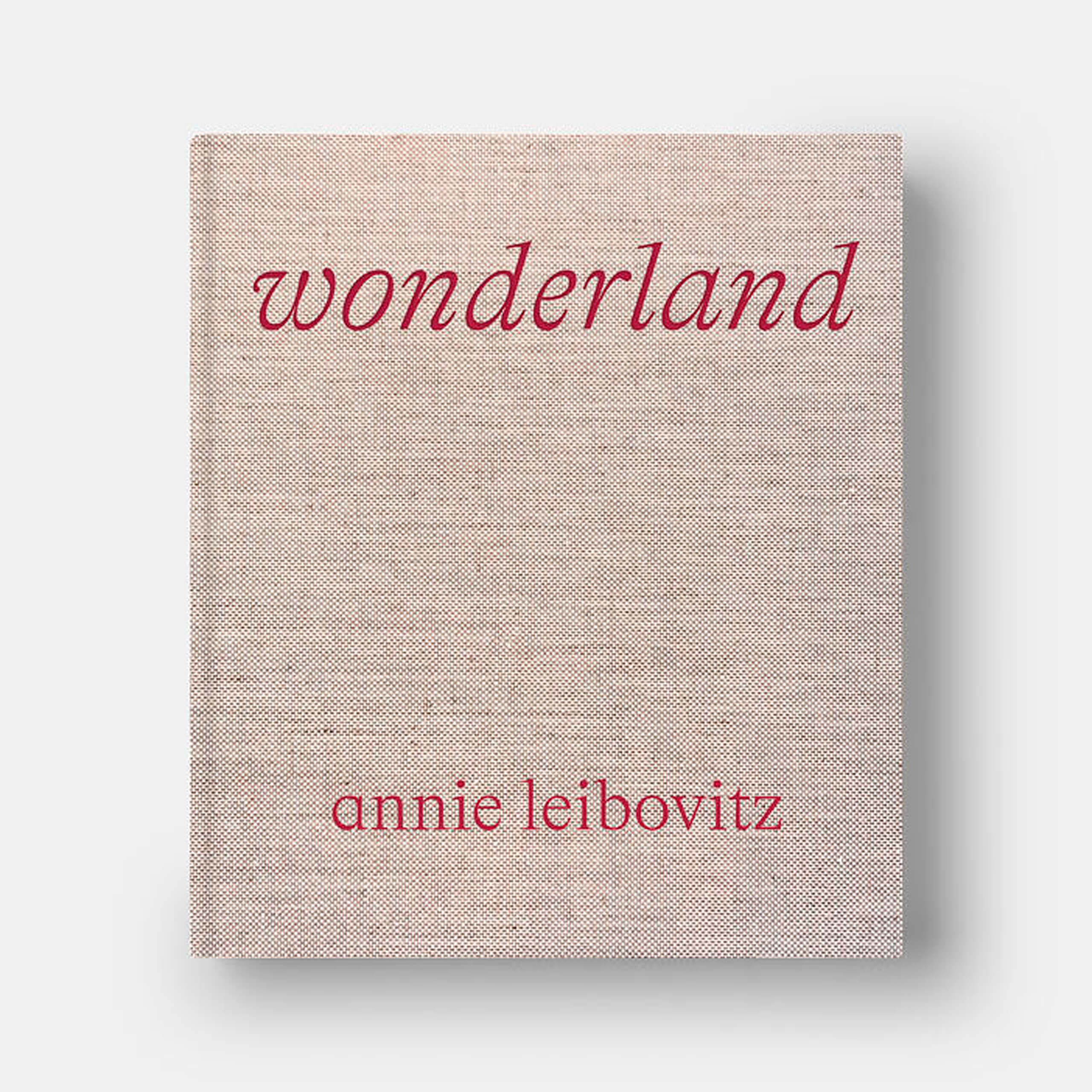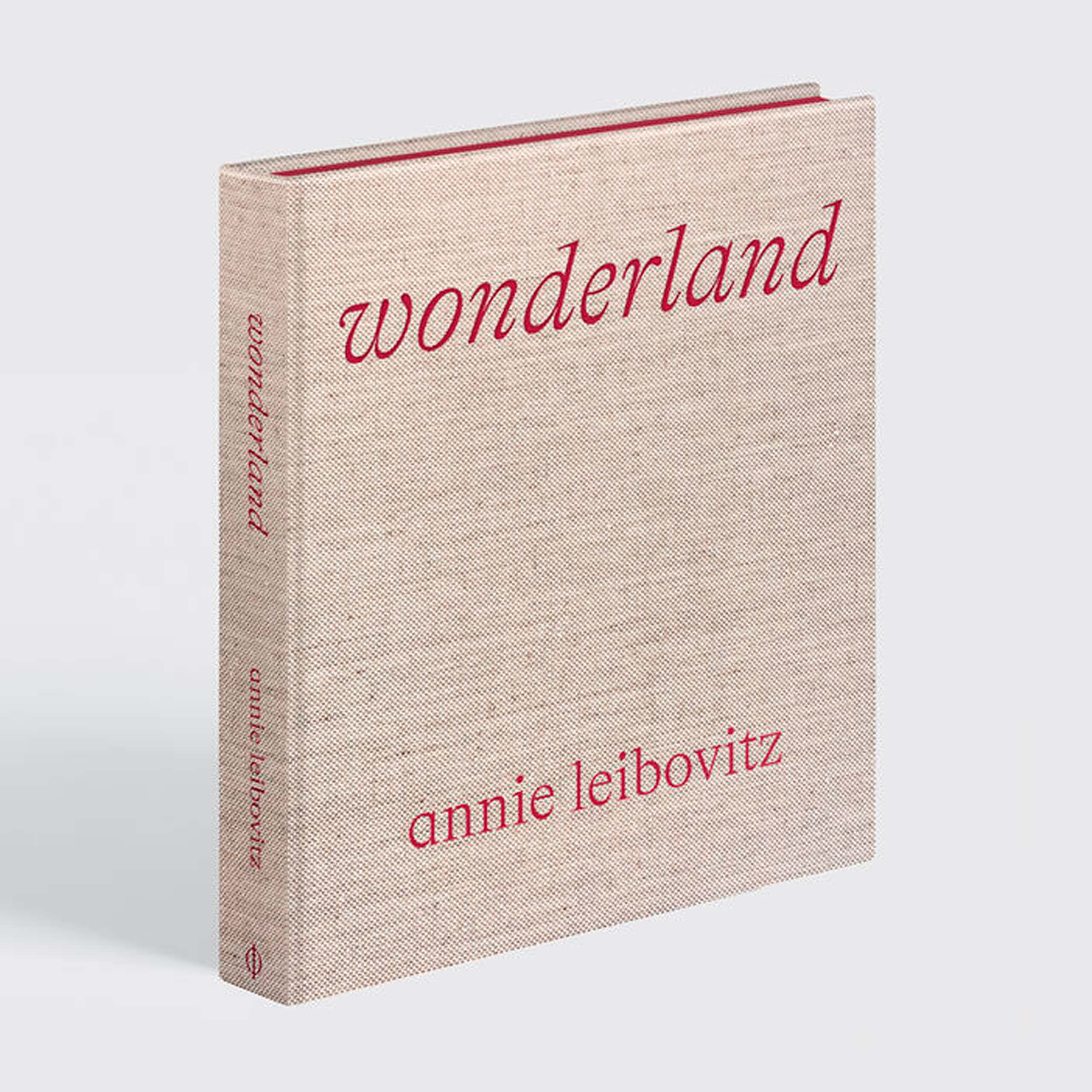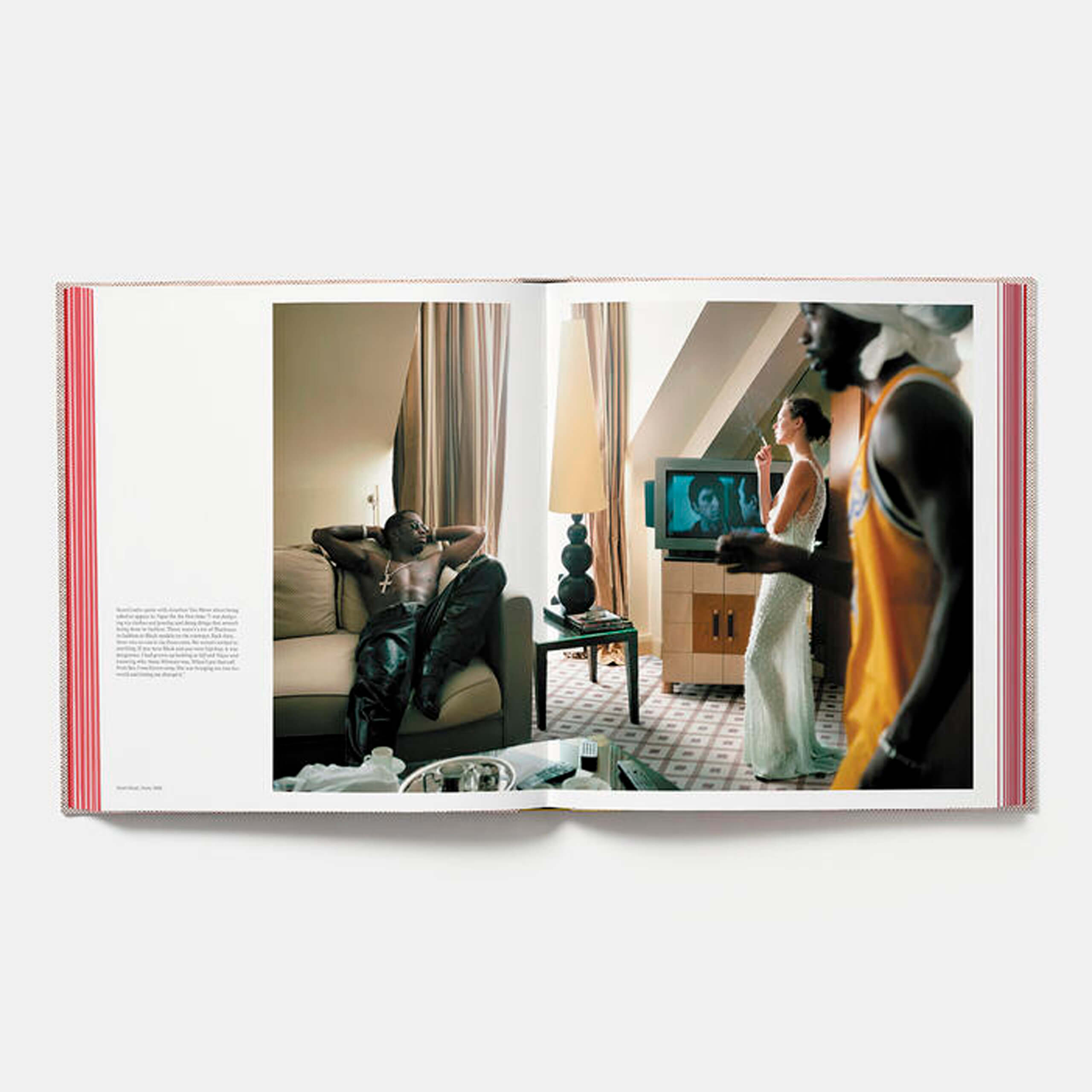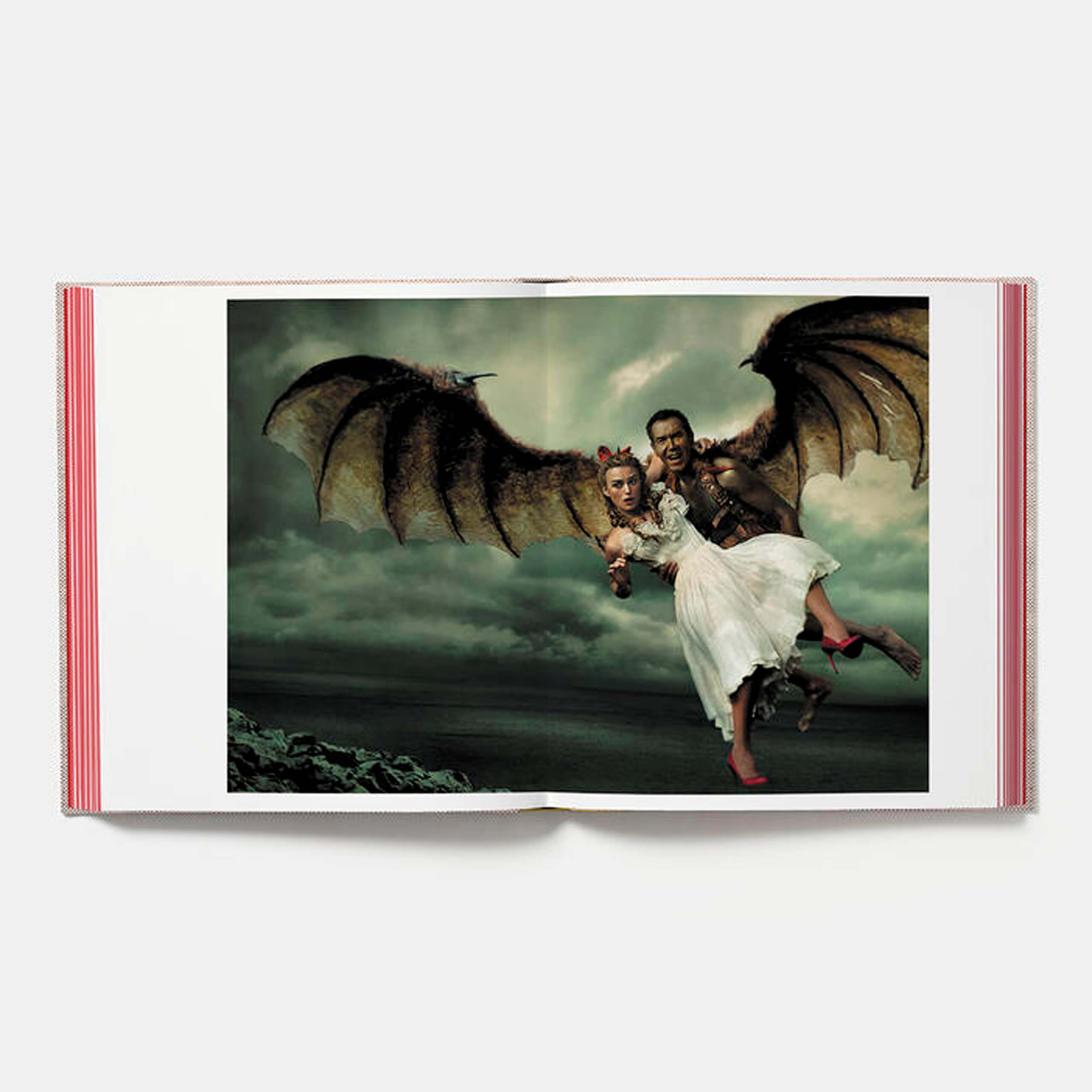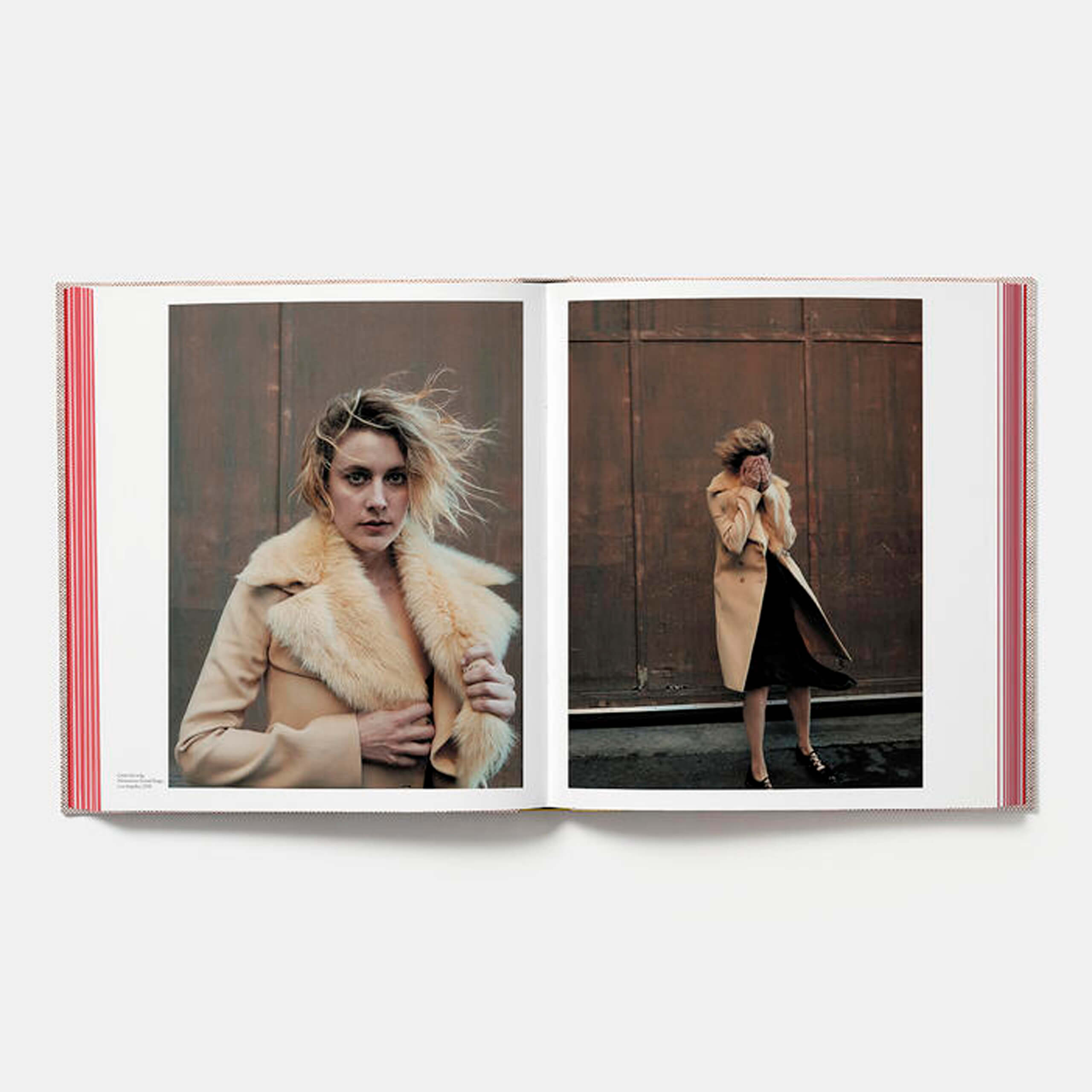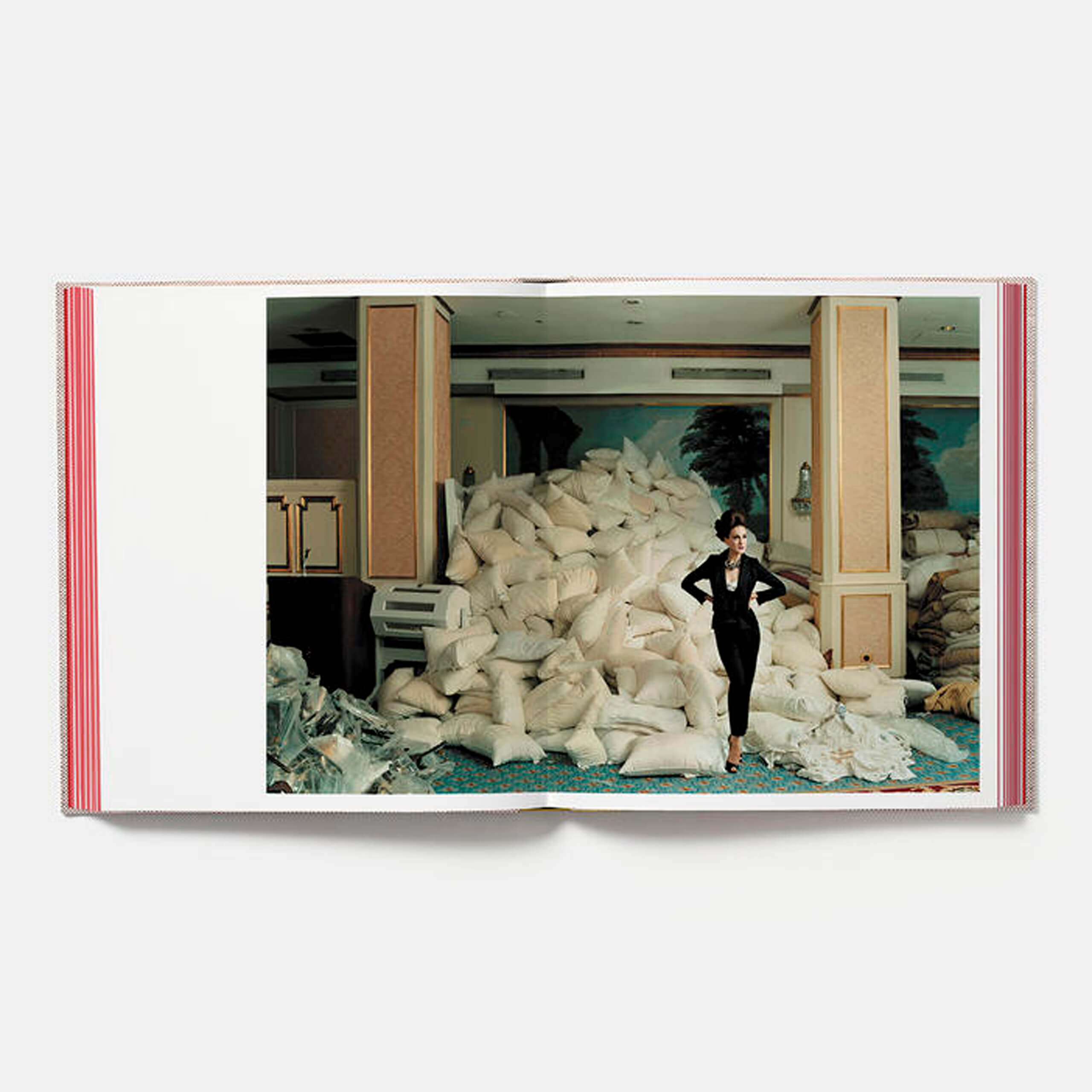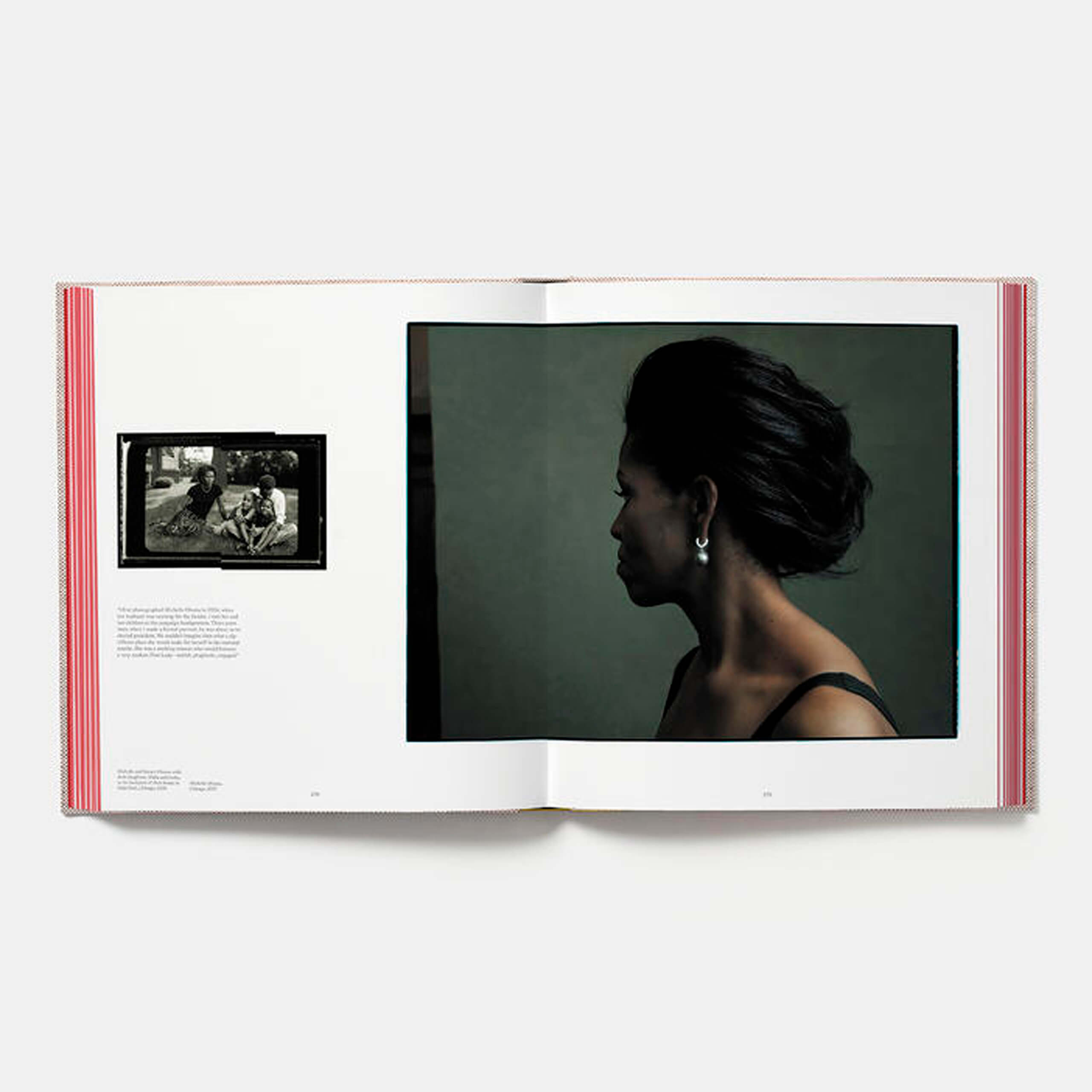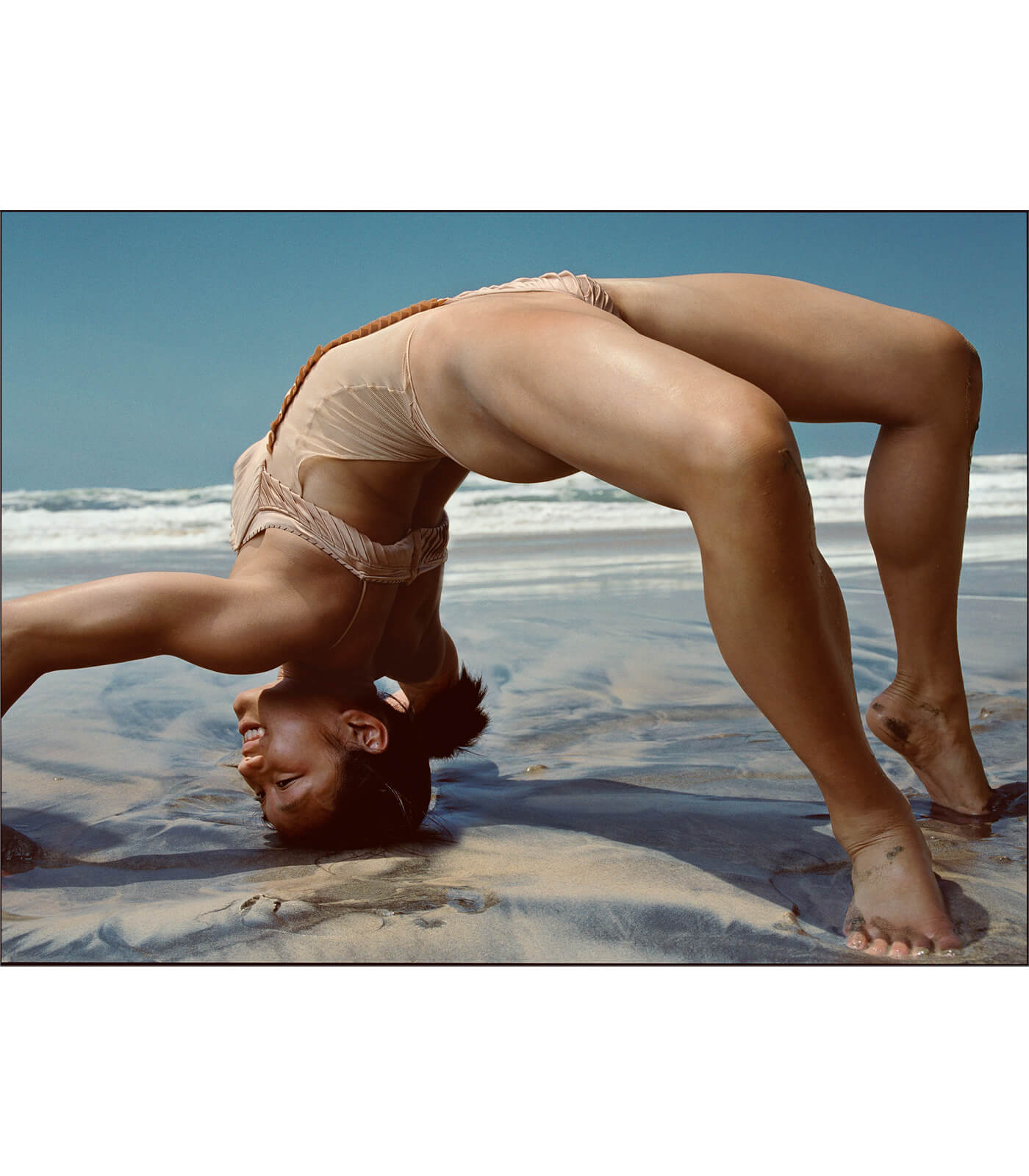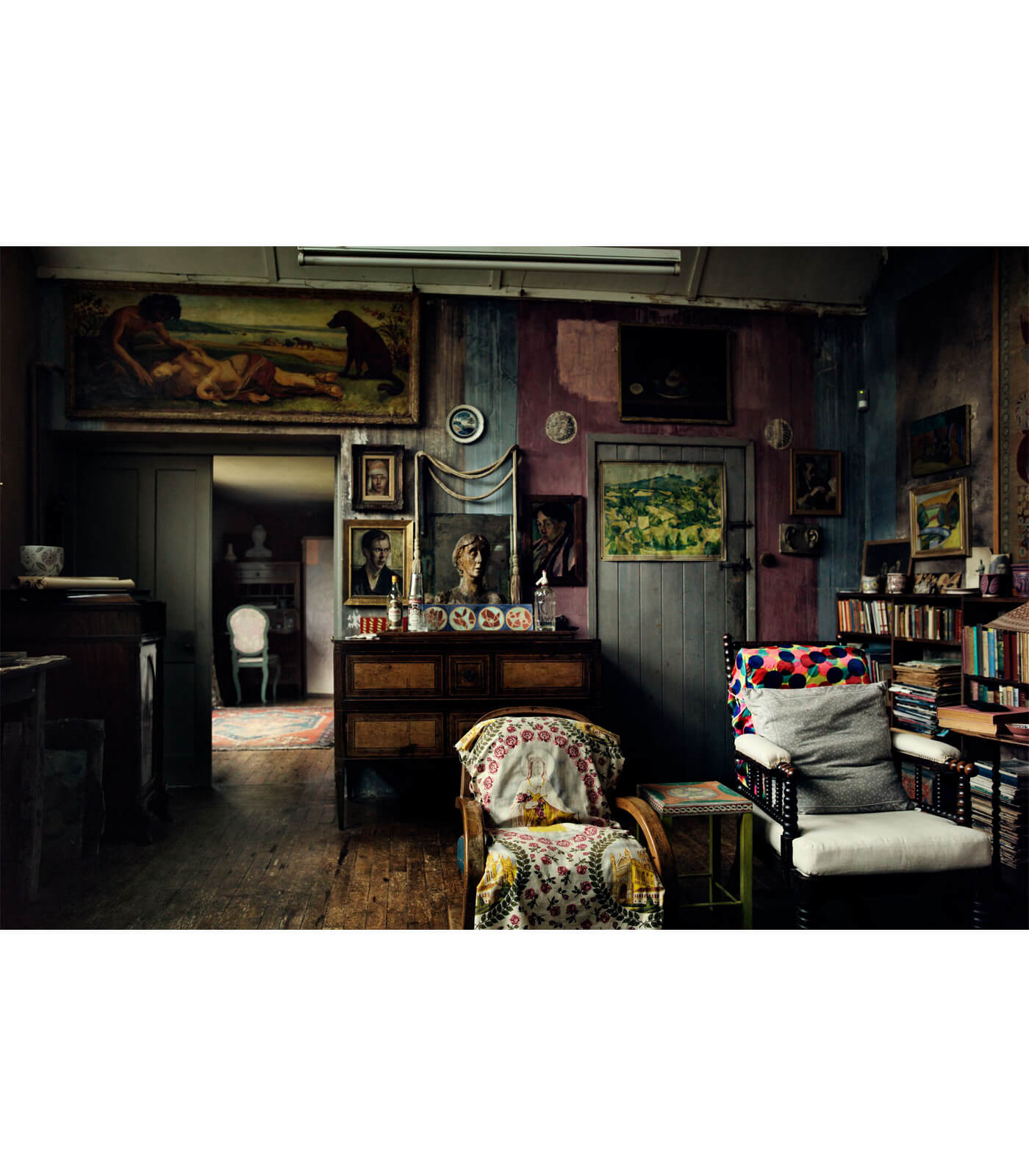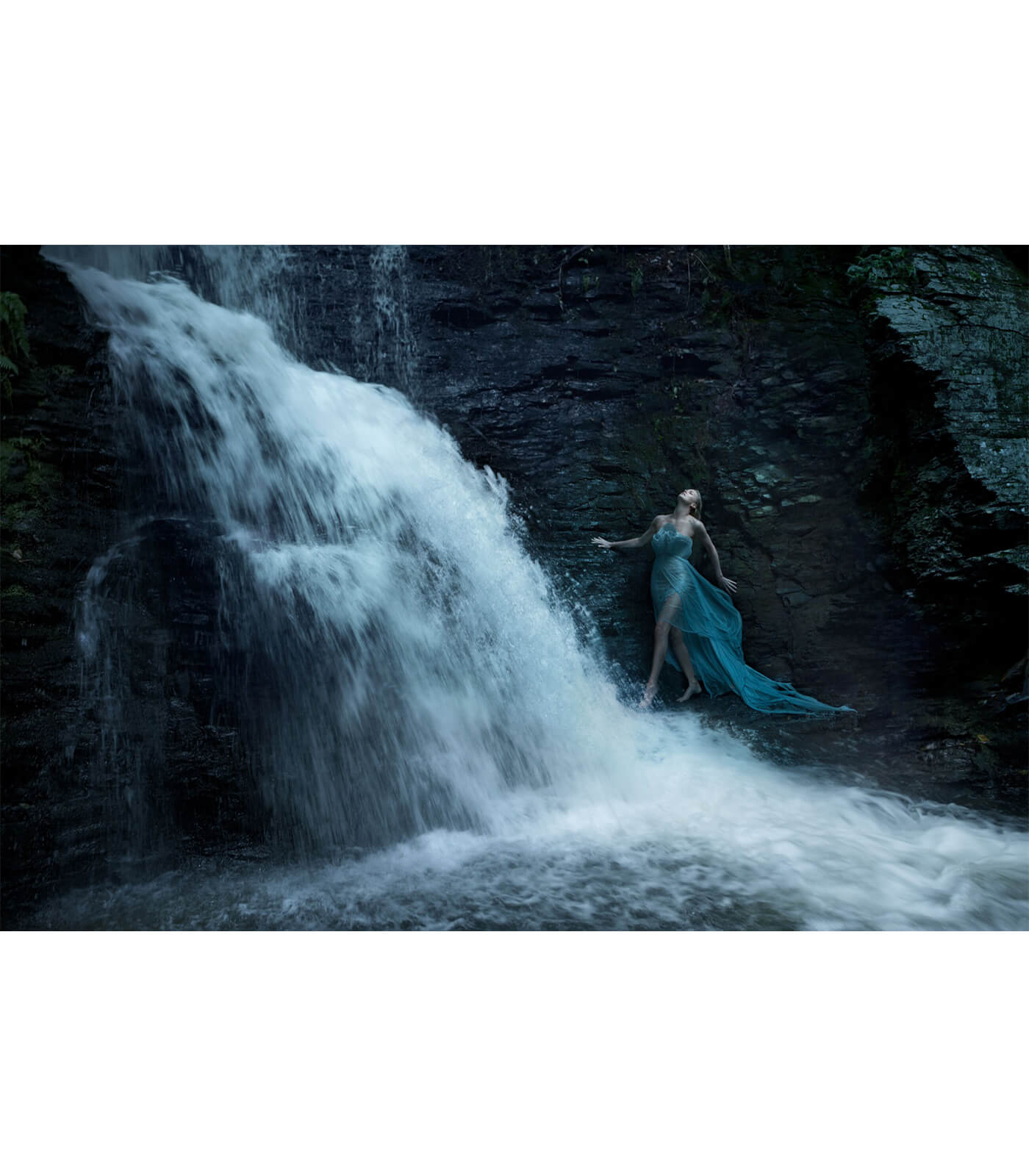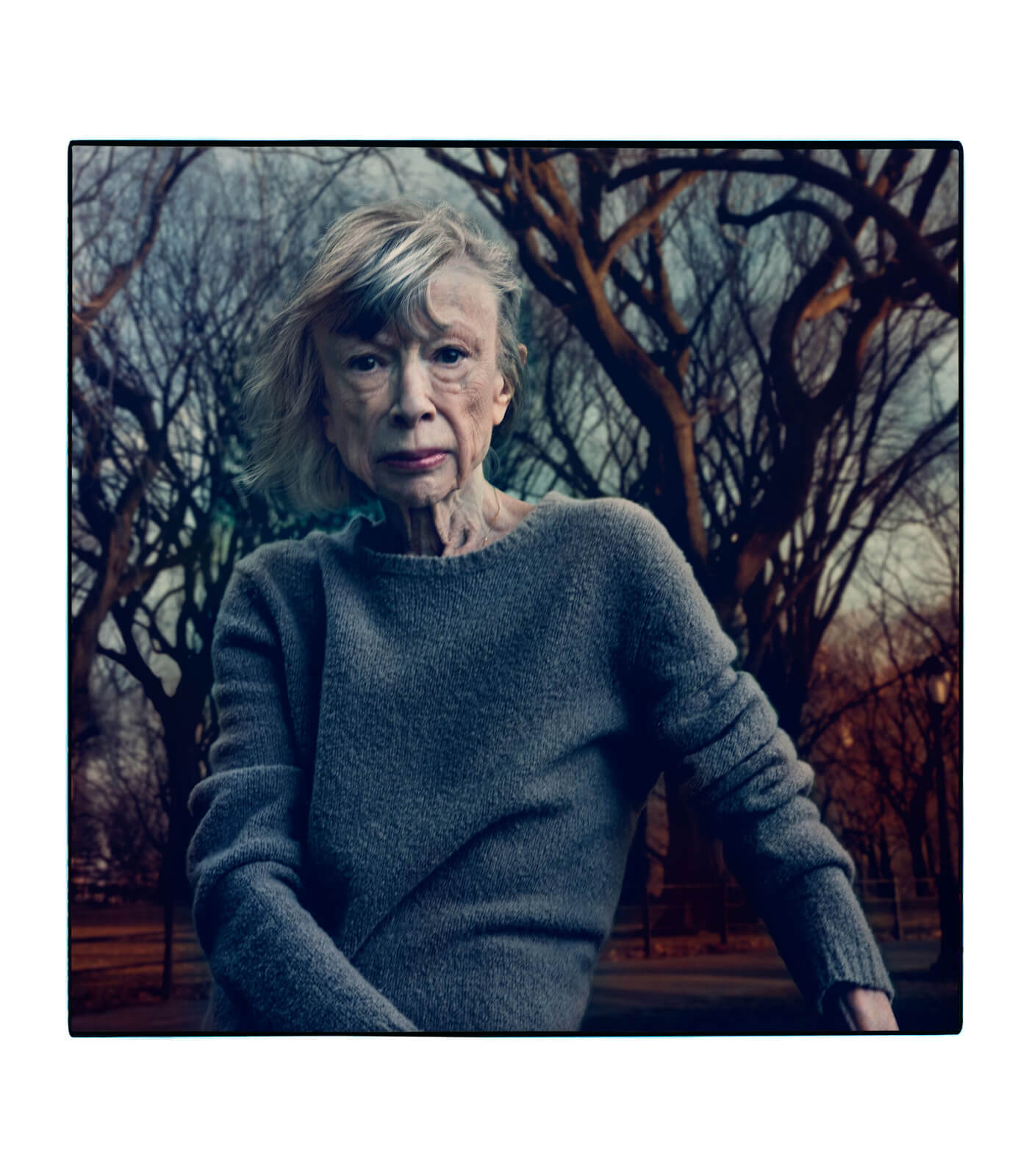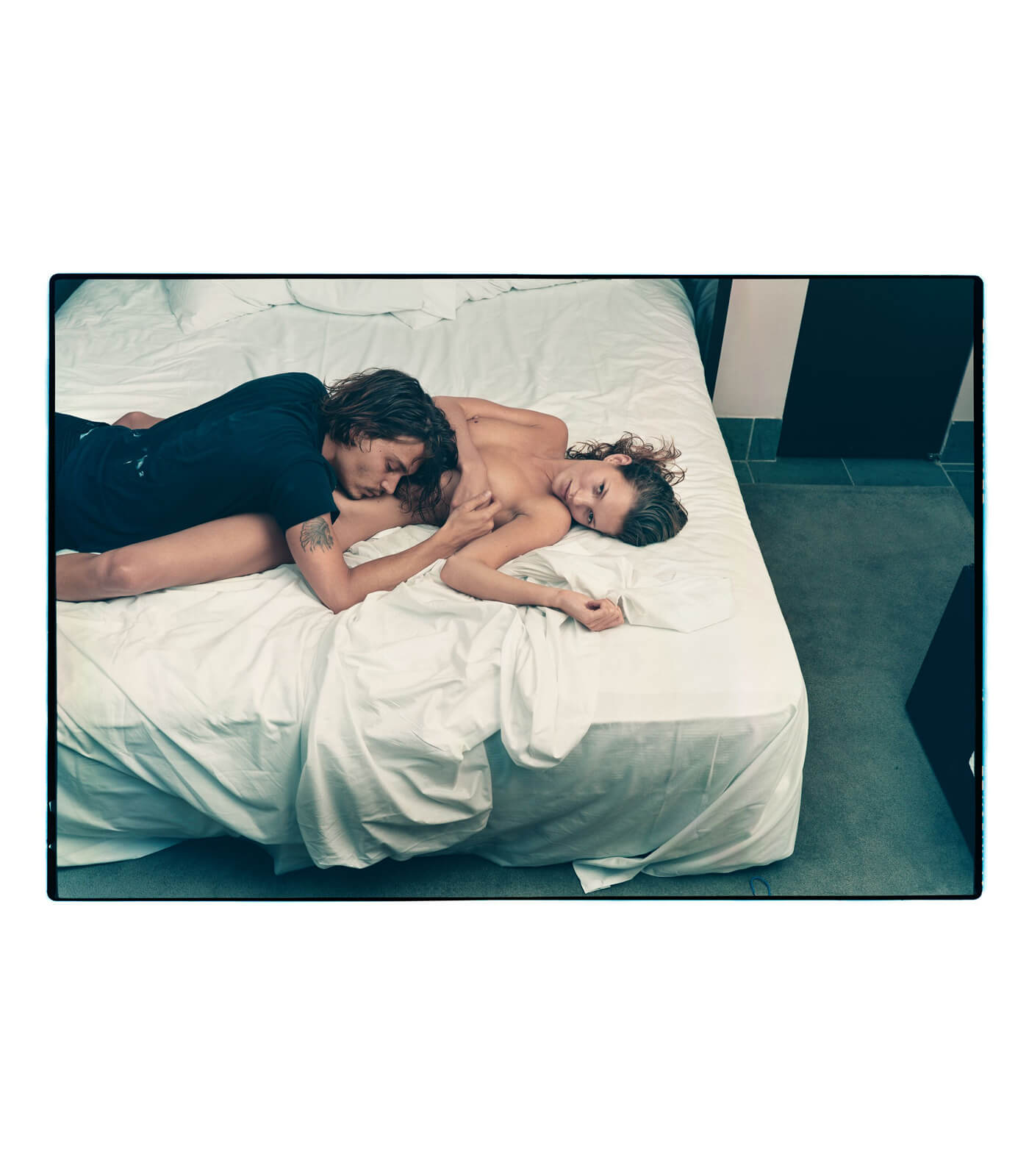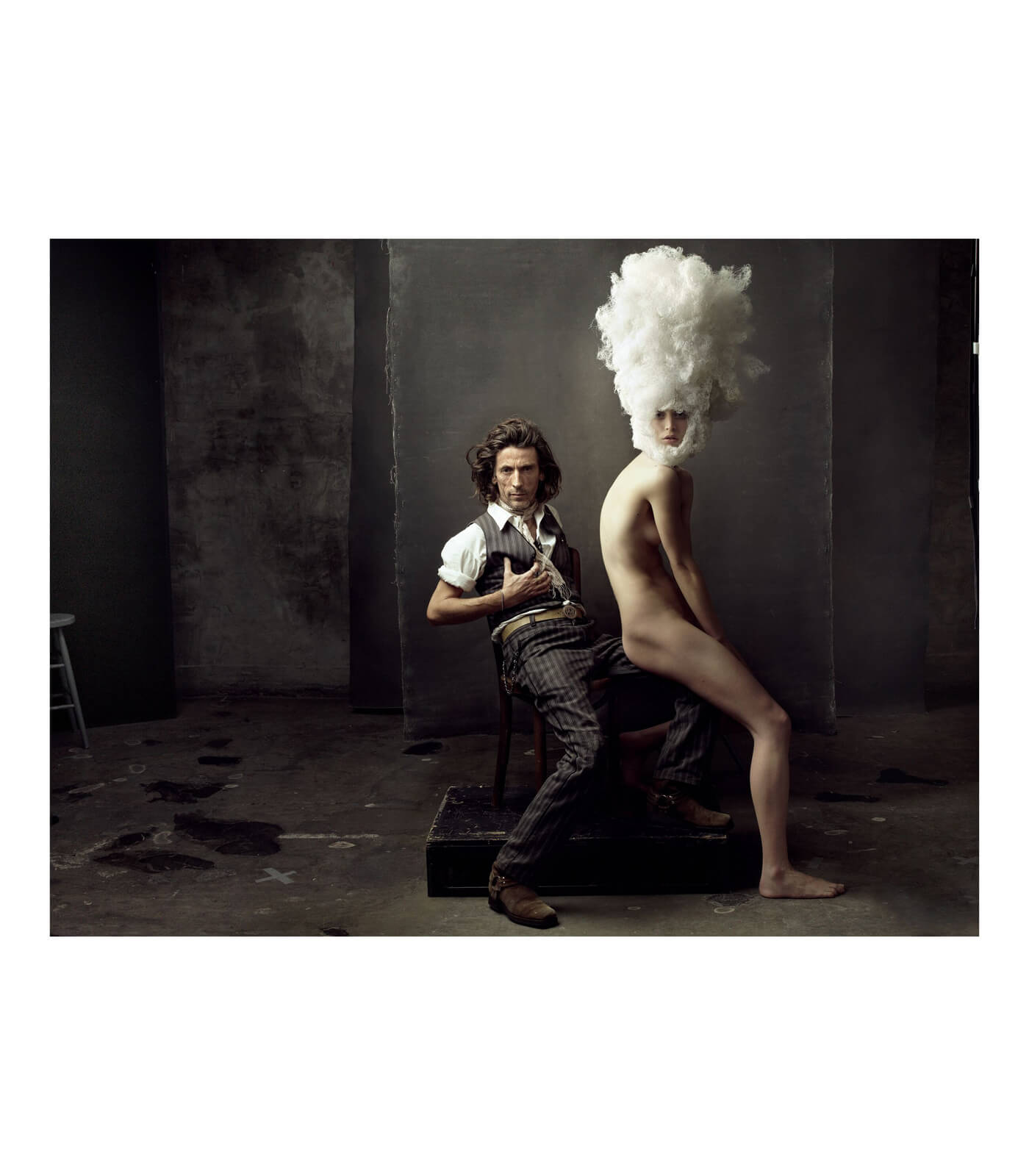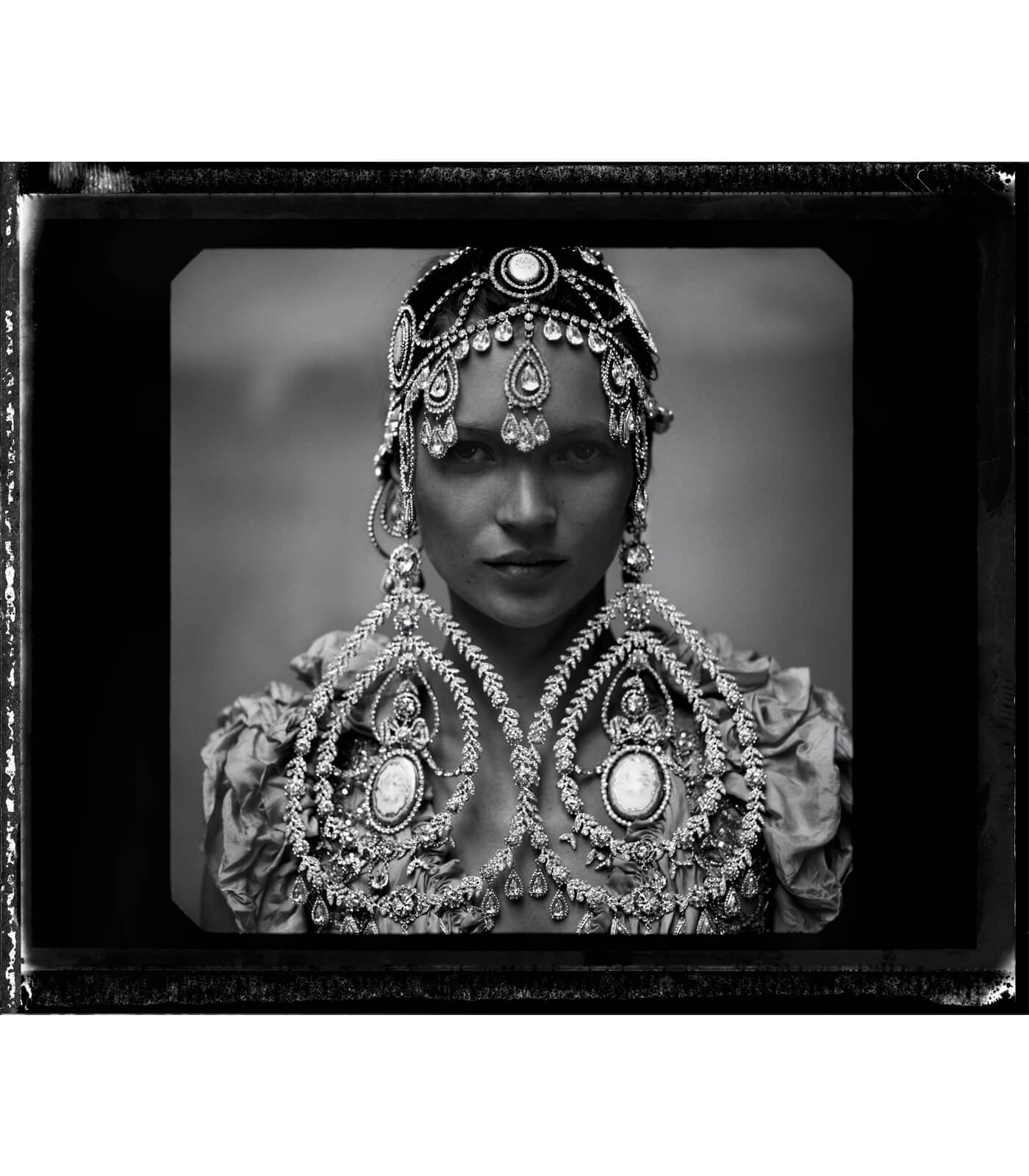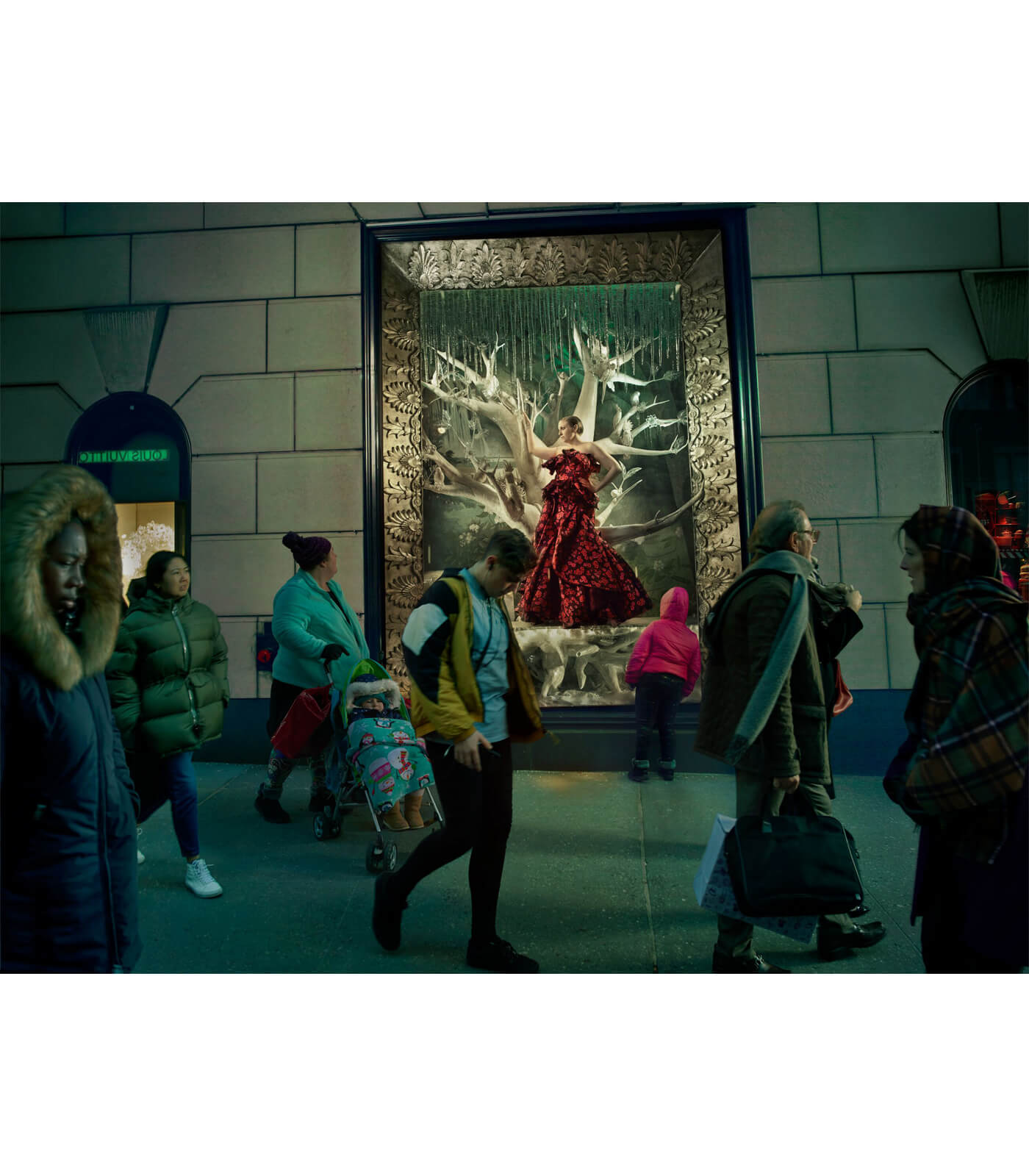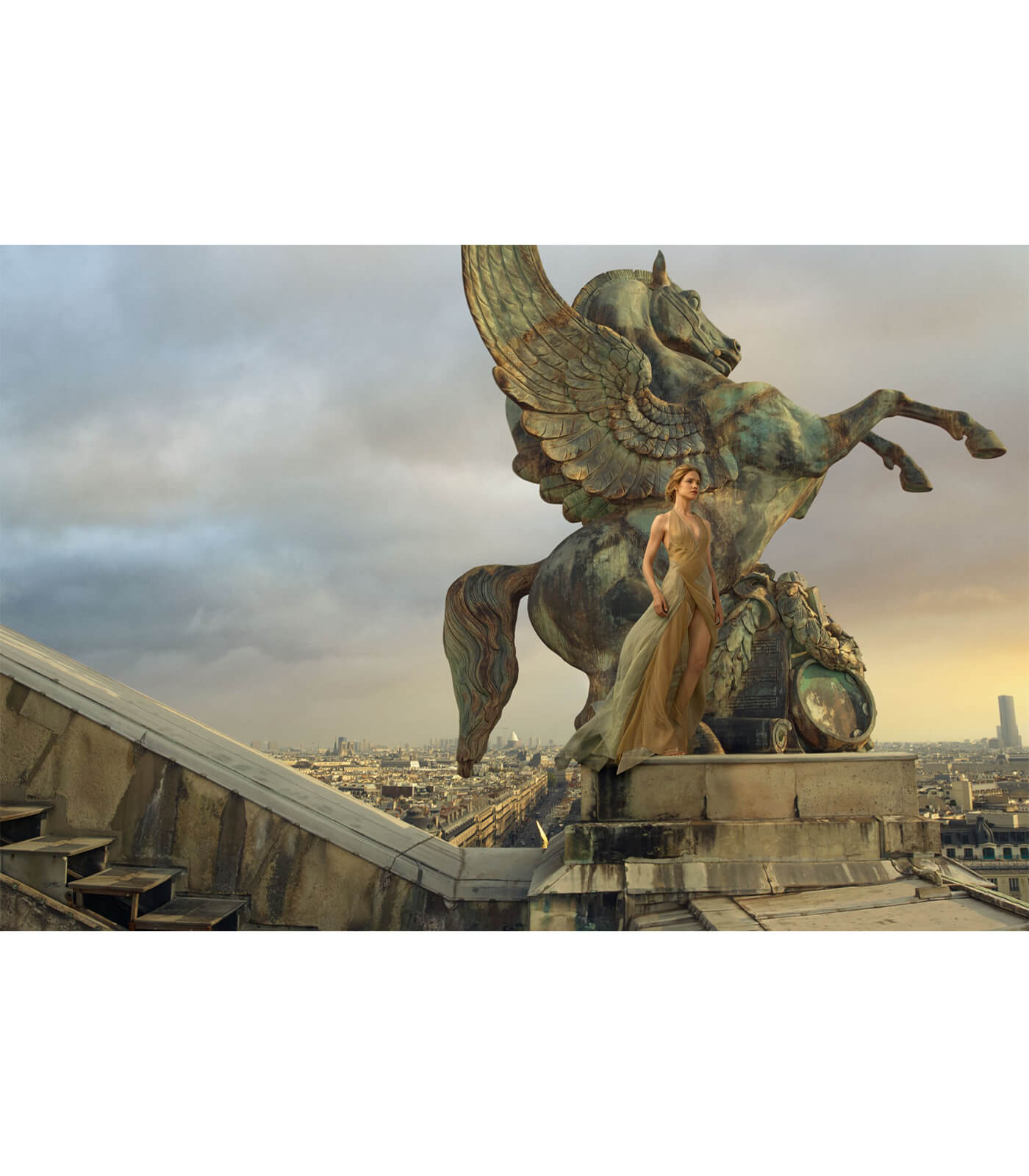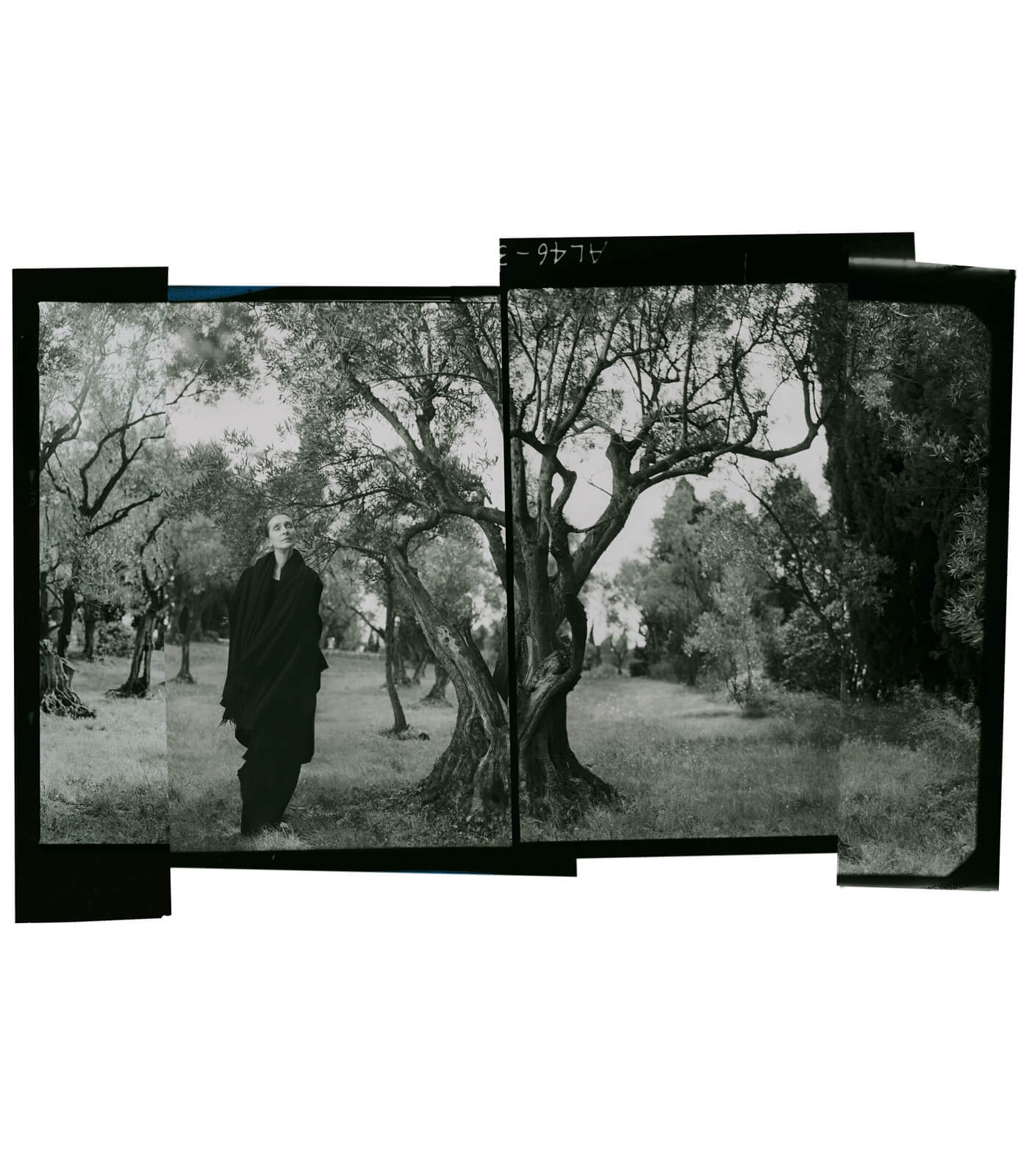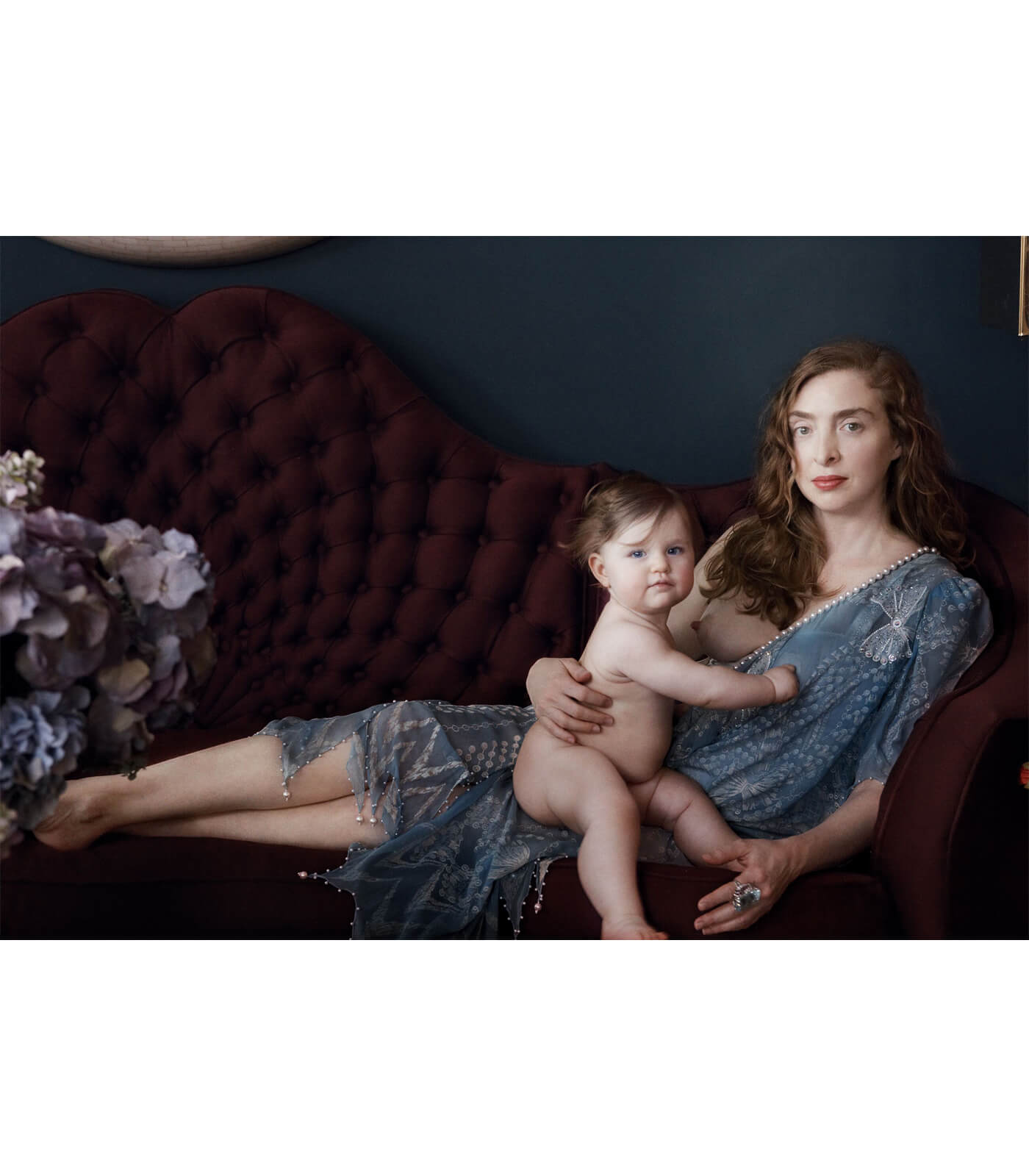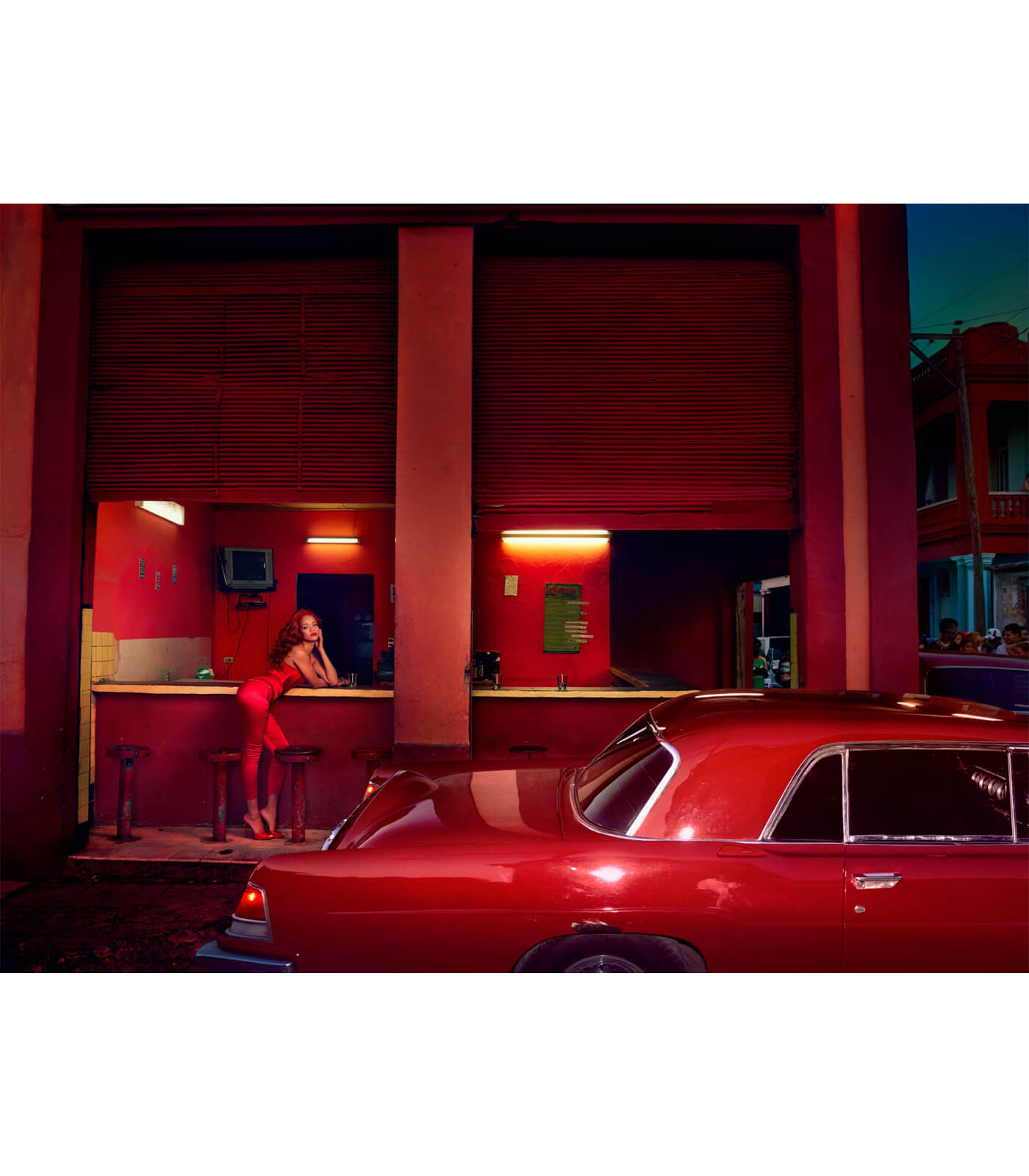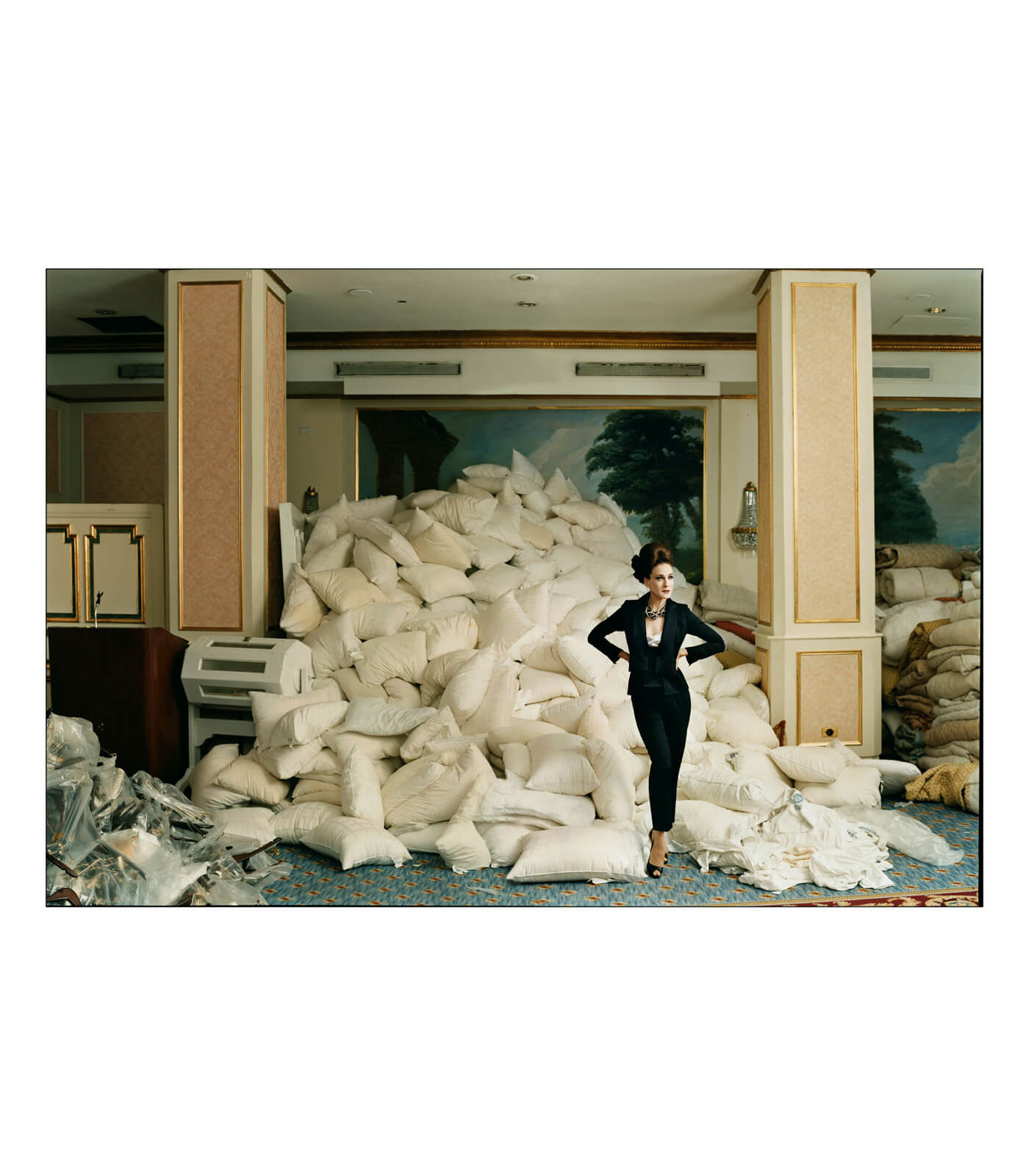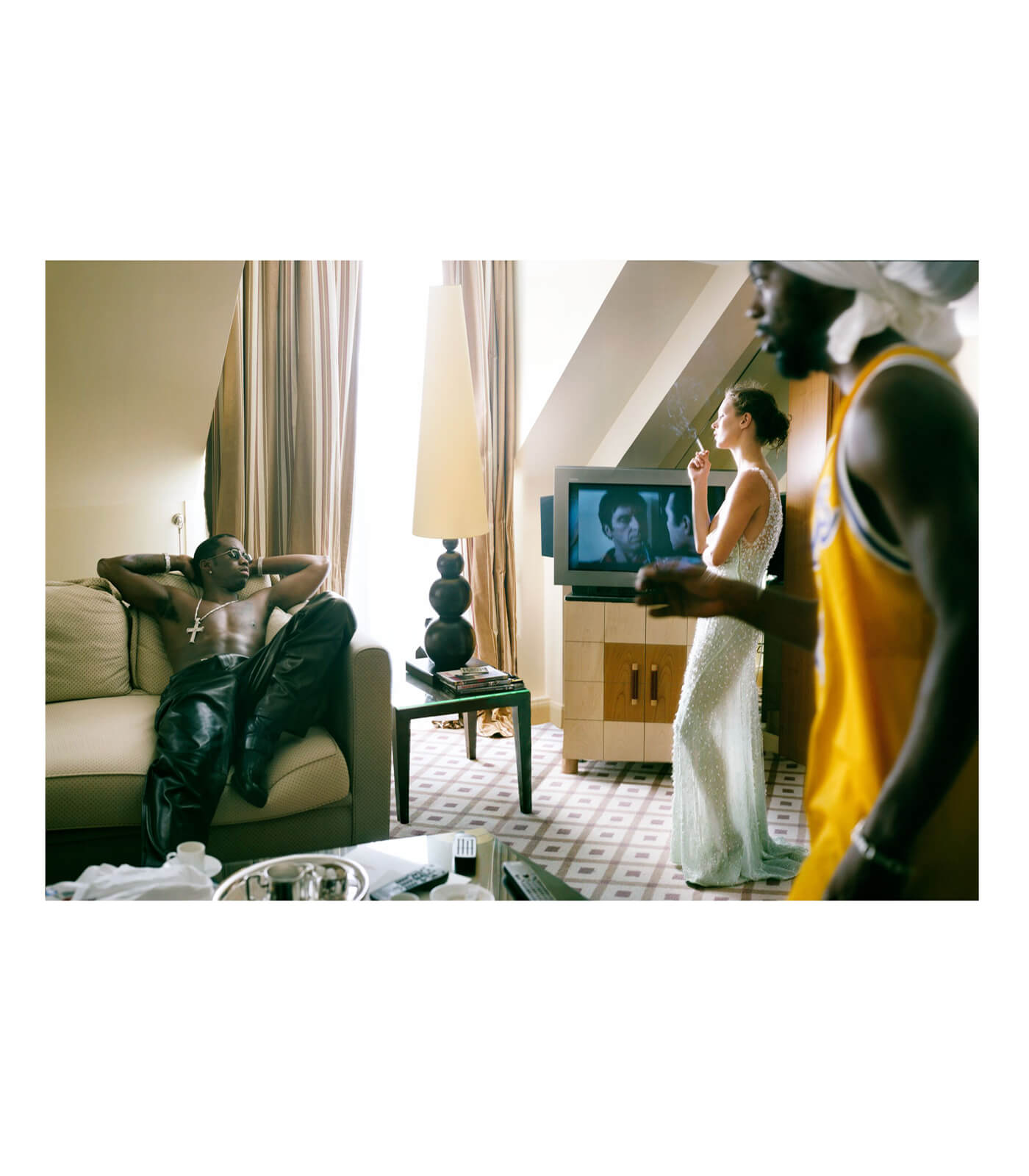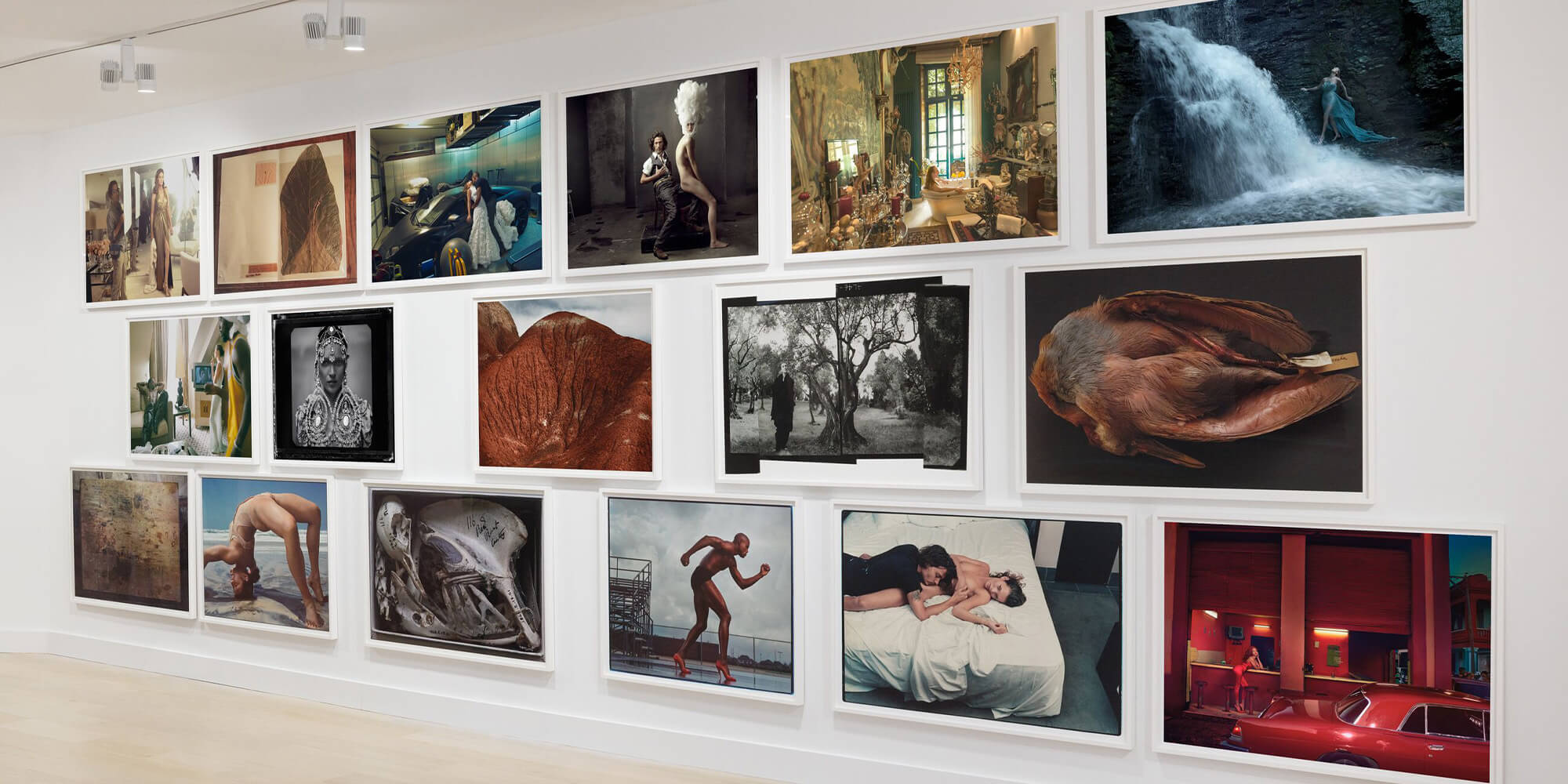
Annie Leibovitz
Wonderland
6 November – 23 December 2021
Southampton
‘Annie Leibovitz. Wonderland’ is an exhibition of photographic prints selected by the artist from her acclaimed body of work made over the past two decades.

Explore the exhibition
This presentation focuses upon work made since the 1990s, including fashion photography shot on assignment that, in the artist’s words, ‘revealed surprising avenues to portraiture.’ The exhibition offers fresh insight into the depth and breadth of Leibovitz’s unique artistic vision via fashion, landscape, and interior tableaux. ‘Wonderland’ is the first exhibition to showcase these images together in a single space, with many of the works having not been presented since their original publication.
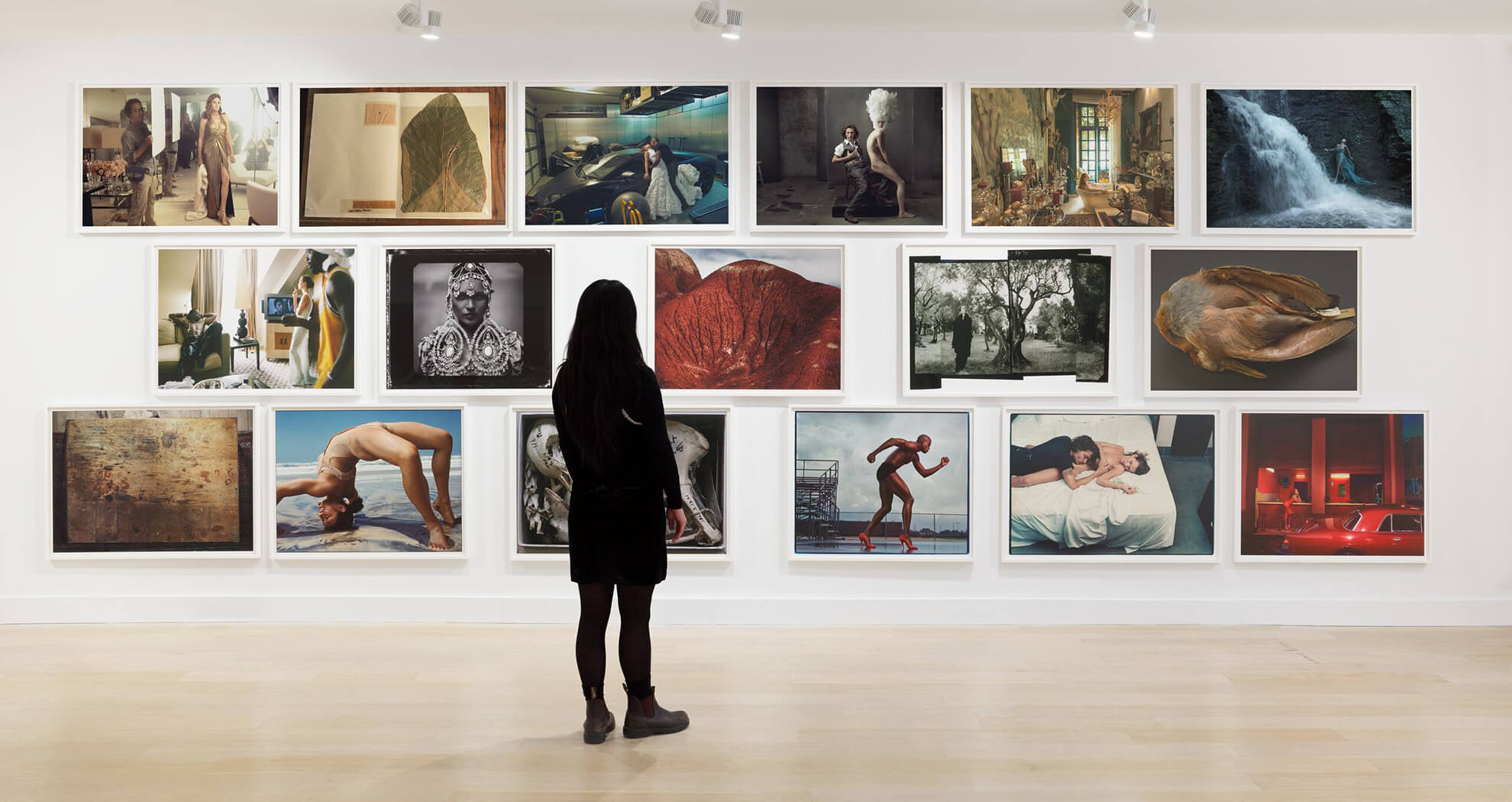

Leibovitz’s work makes use of visual references drawn from a wide range of sources – from literature and film, to the history of photography and the long tradition of formal portraiture within the history of art. On view in the exhibition, her portrait of sculptor and installation artist Rachel Feinstein, originally shot for ‘Vogue,’ shows the sitter as both muse and mother in a way that highlights the dualities of female experience. In this intimate image, Feinstein’s small daughter meets the viewer’s gaze directly, in much the same way as her mother’s, in a composition that recalls and recontextualizes such historical paintings as Jean Auguste Dominique Ingres’s 1840 masterpiece ‘La Grande Odalisque.’
Book Signing with Annie Leibovitz
Please join us at the book signing event for the artist’s new publication at our Southampton, New York gallery on Sat 11 Dec 2021, 2 – 4 pm. In her new book, ‘Annie Leibovitz: Wonderland’ (Phaidon), the legendary photographer gives a surprising account of her encounters with fashion over five decades. Guests will also have the chance to enjoy a special holiday market featuring curated gifts inspired and designed by the gallery’s artists to celebrate the festive winter season.
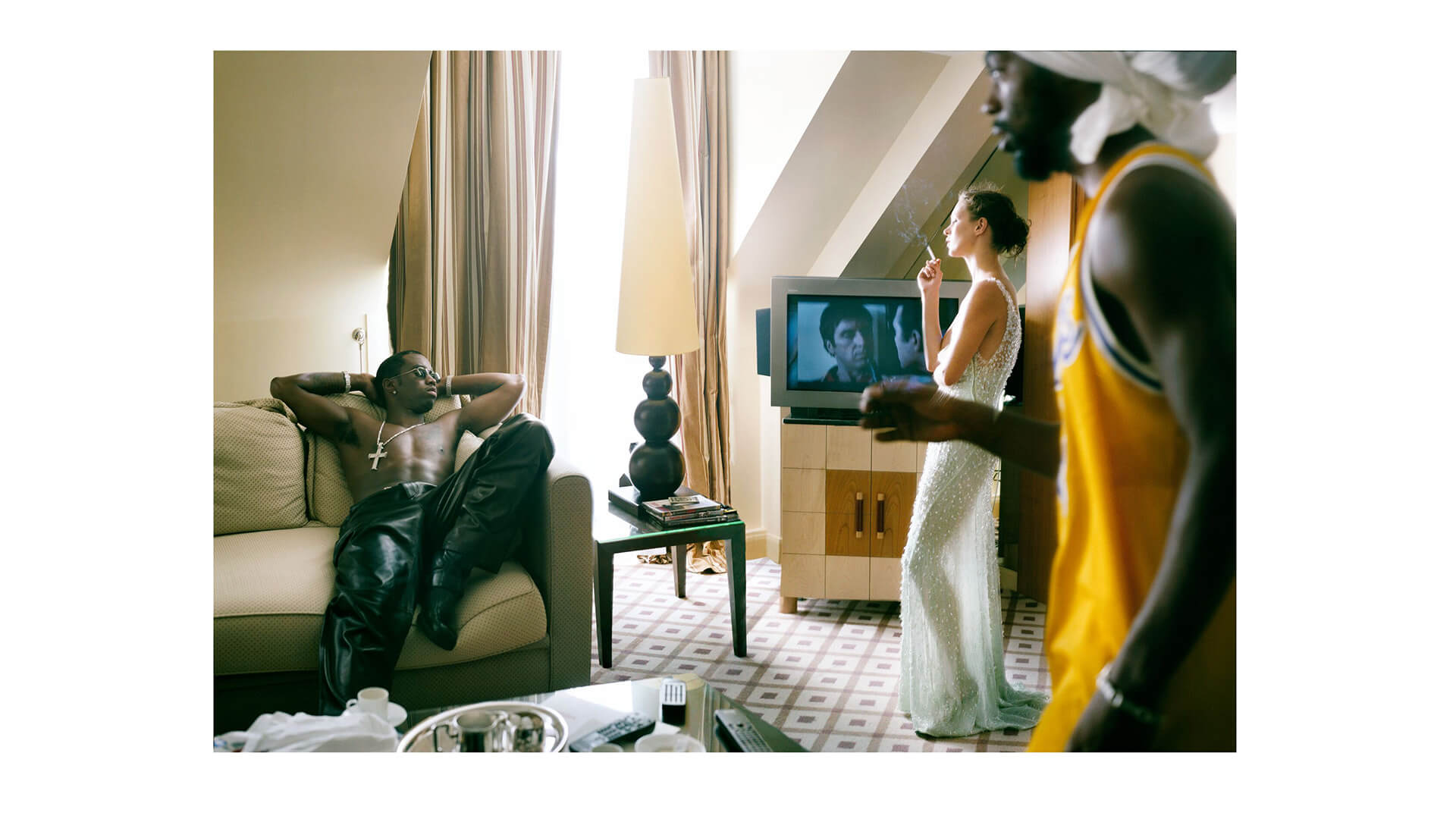
The exhibition also includes key images from Leibovitz’s first couture shoot in Paris for ‘Vogue,’ which featured Kate Moss and Sean Combs in a visual narrative that straddled two dramatic worlds: rap culture and high fashion. In scenes from another ambitious shoot for ‘Vogue,’ Leibovitz paid homage to the 1865 English children’s novel ‘Alice’s Adventures in Wonderland’ – better known as ‘Alice in Wonderland.’

Created in collaboration with the magazine’s fashion editor Grace Coddington, this series cast model Natalia Vodianova in the role of the curious child Alice, with designers Olivier Theyskens as the book’s author, Lewis Carroll, Tom Ford as the White Rabbit, John Galliano as the King of Hearts, Christian Lacroix as the March Hare, Stephen Jones as the Mad Hatter and Jean Paul Gaultier as the Cheshire Cat, among others.
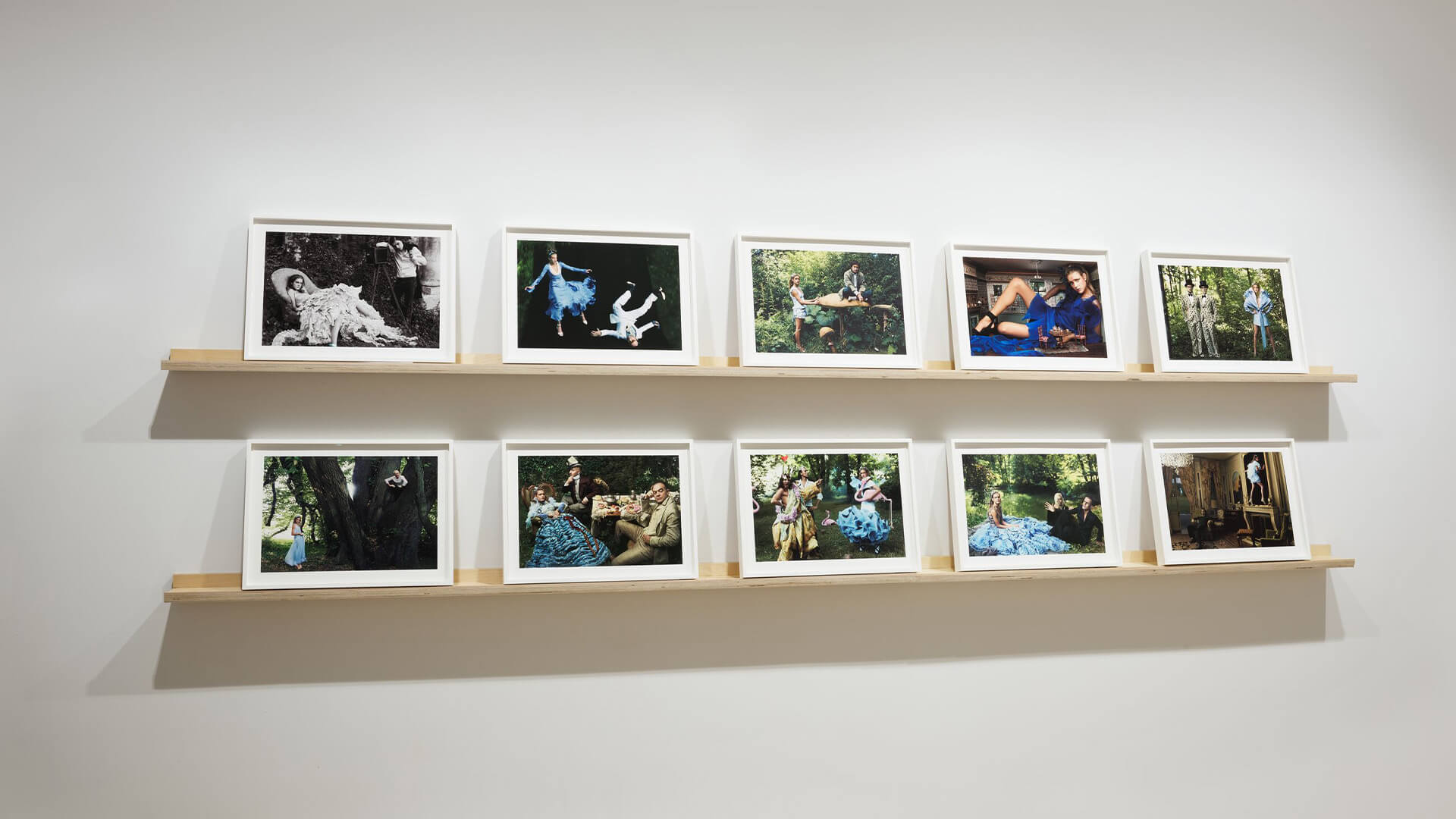
This series positions Leibovitz distinctly within a specific lineage of formal portraiture in which artists’ sitters have assumed historical or literary personae and dressed in costume, hinting at unseen aspects of their identities, or reflecting upon their societal contexts. Clothing and accessories have played an essential role in both the formal construction of image and the conveyance of personality throughout Leibovitz’s oeuvre, a fact she reflects on in her preface to the new book ‘Annie Leibovitz: Wonderland,’ to be released by Phaidon on 18 November.
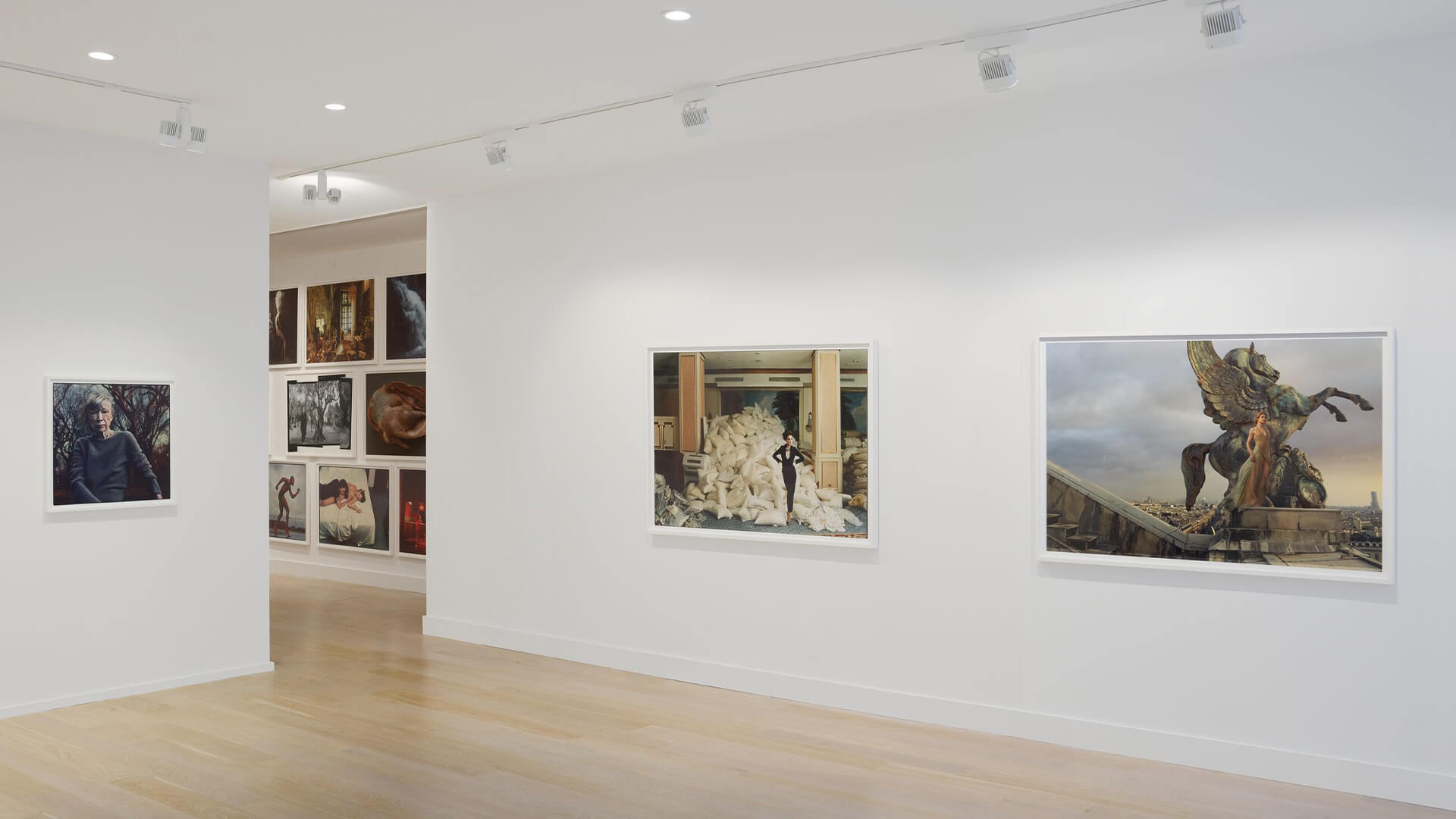
She writes, ‘Looking back at my work, I see that fashion has always been there. It is the driving force in a portrait – whether it is Jerry Garcia in a black T-shirt, or Patti Smith in the much-imitated style that has endured for decades, or the Rolling Stones...Fashion plays a part in the scheme of everything, but photography always comes first for me. The photograph is the most important part. And photography is so big that it can encompass portraiture, reportage, family photographs, fashion. There are so many ways to use photography...I’ve never thought of myself as a fashion photographer, but my work for ‘Vogue’ fueled the fire for a kind of photography that I might not otherwise have explored.’
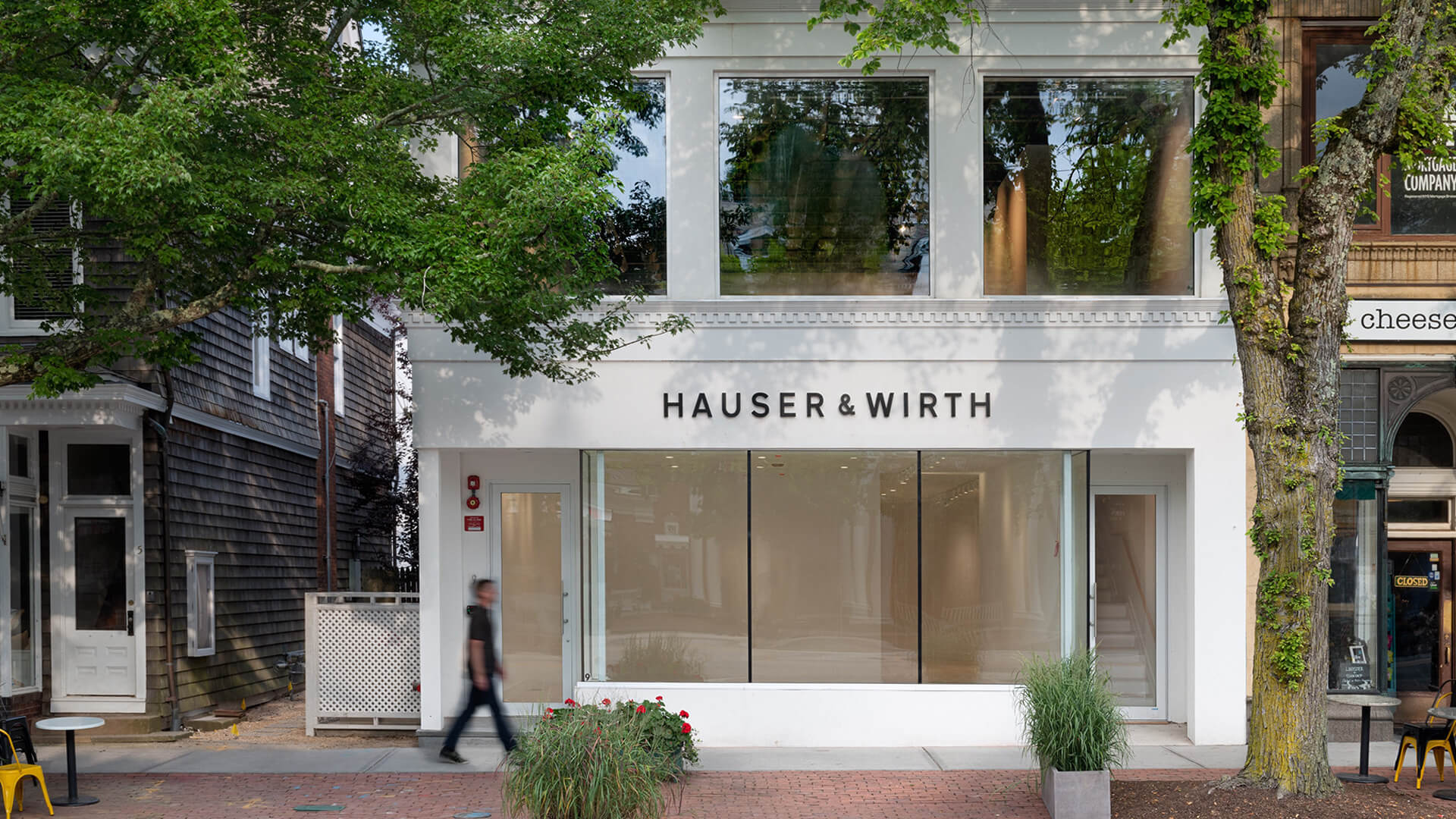
On view in Southampton
‘Annie Leibovitz. Wonderland’ is on view now through 23 December 2021 at Hauser & Wirth Southampton.
About the Artist
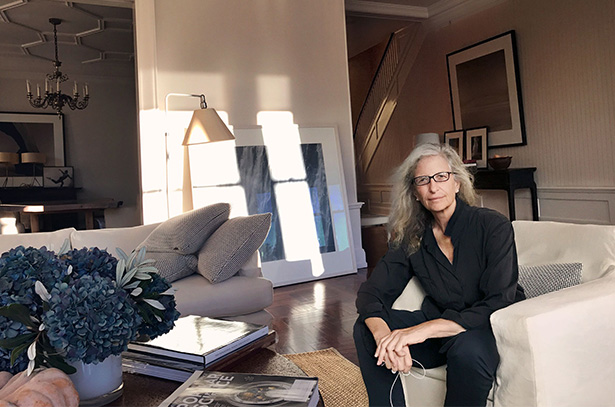
Annie Leibovitz
Annie Leibovitz was born in 1949 in Connecticut. She bought her first camera in the summer of 1968, when she was a student at the San Francisco Art Institute, and her early works are punctuated by images of the Bay Area landscape and photographs shot during drives the artist often took on the highways between San Francisco and Los Angeles. She switched majors from painting to photography, and while still a student, in 1970, she approached Rolling Stone magazine—just three years after its inception—with a few of her pictures. Some of them were published, thus beginning her career as a photojournalist and embarking on what would develop into a symbiotic relationship between the young photographer and a magazine famous for reflecting the American zeitgeist. Leibovitz’s first major assignment was for a cover story on John Lennon.Leibovitz became Rolling Stone’s chief photographer in 1973, and by the time she left the magazine, she had amassed 142 covers and published photo essays on scores of stories, including the 1975 Rolling Stones tour. Moments of freedom and an unyielding imagination fed the evolution of Leibovitz’s photography. The monumental body of work taken during her thirteen-year tenure at Rolling Stone blurred the lines between celebrity and civilian, interviewer and interviewee, artist and subject, dissolving the boundary separating Leibovitz from those captured in her photographs. Documenting fellow reporters and photographers in addition to their subjects, Leibovitz highlighted those hidden behind the camera and brought them to the forefront.
Leibovitz recorded major political moments of the Seventies in the United States, including the 1972 presidential campaign, which she covered with the writer Hunter S. Thompson. In a haunting photograph taken when President Richard Nixon resigned, on August 9, 1974, Leibovitz’s camera records his helicopter as it takes off from the White House lawn. Her immersion within the political landscape extended to photographs from the 1976 election, when figures such as Jerry Brown and Jimmy Carter seized national attention. The artist photographed the Democratic National Convention in New York City, showcasing candid moments with Dianne Feinstein and journalists such as Sally Quinn and Dan Rather. Leibovitz’s unobtrusive lens implicates both the photographer and her colleagues as significant actors and contributors to cultural moments.
When traveling with the Rolling Stones to document their tour of the Americas in the summer of 1975, Leibovitz entered the band’s world to such a degree that only her camera served as a reminder of her identity. It was Leibovitz’s distinct ability to immerse herself in varying environments that enabled a direct engagement with her subjects, revealing their true, honest, and perhaps most vulnerable selves.
Leibovitz began using a medium-format camera that produced square photographs and was appropriate for shooting set-up portraits with a strobe light. The planned portraits were based on a straightforward idea often stemming from a deeply personal collaboration with her subjects. Evidencing a level of uncanny intimacy and an uncommon depth of engagement, this relationship can be seen in one of her most celebrated photographs, in which a naked John Lennon clutches Yoko Ono. The portrait, made on December 8, 1980, was meant to serve as an intimate emblem of the couple’s relationship. When Lennon was killed just hours after the photo was taken, the image became a powerful visual memorial.
In 1983, when Leibovitz joined the staff of the revived Vanity Fair, she was established as the foremost rock-music photographer and an astute documentarian of the social landscape. At Vanity Fair, and later at Vogue, she developed a large body of work—portraits of actors, directors, writers, musicians, athletes, and political and business figures, as well as fashion photographs. Leibovitz’s portraiture reflects a signature technique she developed early in her career, as she consciously and consistently fit style to subject through collaborating with her subjects, photographing them in their homes or in a location that meant something to them, where friends, lovers, children, and other personal markers might appear.
Annie Leibovitz’s prolific output and her inventive approach to photography itself position her distinctly within the traditions and trajectory of American portraiture during the twentieth century. Her unique photographic language dovetailed with—and advanced—the medium’s evolution as a force for art making. The singularity of her vision, which included combining portraiture with photojournalism that captured historical and cultural touchstones throughout the United States and abroad, places her within a lineage of some of her personal heroes—artists like Andy Warhol and Richard Avedon, both innovators of their mediums. Influences such as Robert Frank and Henri Cartier-Bresson inspired Leibovitz to turn the tide on photography’s reception. Combining Frank’s highly personal and emotional style of photographic reportage with Cartier-Bresson’s Surrealist and even sculptural art photography, Leibovitz embraced her own inclination toward personal journalism. The artist’s large and distinguished body of work encompasses some of the most well-known portraits of our time.
Leibovitz is the recipient of many honors. In 2006 she was made a Commandeur in the Ordre des Arts et des Lettres by the French government. The previous year, in a compilation of the forty top magazine covers of the past forty years by the American Society of Magazine Editors (ASME), she held the top two spots (#1 for the photograph of John Lennon and Yoko Ono taken for Rolling Stone the day Lennon was shot, and #2 for the pregnant Demi Moore in Vanity Fair). In 2009, she received the International Center of Photography’s Lifetime Achievement Award, ASME’s first Creative Excellence Award, and the Centenary Medal of the Royal Photographic Society in London. In 2012, she was the recipient of the Los Angeles Museum of Contemporary Art Award to Distinguished Women in the Arts and the Wexner Prize. In 2013 she received the Prince of Asturias Award for Communication and Humanities. She was the inaugural recipient of the San Francisco Museum of Modern Art Contemporary Vision Award in 2015. In 2018, she received a Lifetime Achievement Award for Excellence in the Arts from the National Museum of Women in the Arts. Leibovitz has been designated a Living Legend by the Library of Congress. She lives and works in New York.
Inquire about available works by Annie Leibovitz
Leibovitz is the recipient of many honors. In 2006, she was made a Commandeur in the Ordre des Arts et des Lettres. She has received the International Center of Photography’s Lifetime Achievement Award, the first Creative Excellence Award from the American Society of Magazine Editors, the Centenary Medal of the Royal Photographic Society in London, the Los Angeles Museum of Contemporary Art Award to Distinguished Women in the Arts, the Wexner Prize, and the Prince of Asturias Award for Communication and Humanities. She has been designated a Living Legend by the United States Library of Congress. She lives in New York with her three children, Sarah, Susan and Samuelle.
Several collections of Leibovitz’s work have been published. They include, ‘Annie Leibovitz: Photographs,’ (1983); ‘Annie Leibovitz: Photographs 1970–1990,’ (1991); ‘Olympic Portraits (1996); Women,’ (1999), in collaboration with Susan Sontag; ‘American Music,’ (2003); ‘A Photographer’s Life, 1990-2005,’ (2006); ‘Annie Leibovitz at Work,’ (2008; revised edition 2018), a first-person commentary on her career; and ‘Pilgrimage,’ (2011); ‘Annie Leibovitz: Portraits 2005-2016,’ (2017); ‘Annie Leibovitz: The Early Years, 1970-1983,’ (2018); ‘Annie Leibovitz: Wonderland,’ (2021).
–
‘Annie Leibovitz. Wonderland’ is on view now through 23 December 2021 at Hauser & Wirth Southampton.
Current Exhibitions
1 / 12
